If you’re heading to Nikko and love history, staying at the Kanaya Hotel in the historical district is a must do. Originally birthed as the Kanaya Cottage Inn, in the late 1800’s (was known as a Japanese summer resort around 1878). Less than twenty years later, it became known as the Kanaya Hotel and added 30 “Western-style” rooms, overlooking Nikkoyama. In fact, it is the first western style hotel in the country.
When the Nikko Imperial Palace was established in the Taisho Era, Nikko became a more sought after destination from those seeking a vacation refuge from within Japan as well as from overseas guests. This historical Kanaya property was the place to go to and today, aims to be the hotel where Meiji, Taisho, Showa, and the current Heisei Era meet while integrating the modern culture of Japanese life today. In 2005, several of Nikko Kanaya Hotel’s buildings were registered and nationally designated as “cultural properties.” As you can see, it has kept its original charm on the outside.
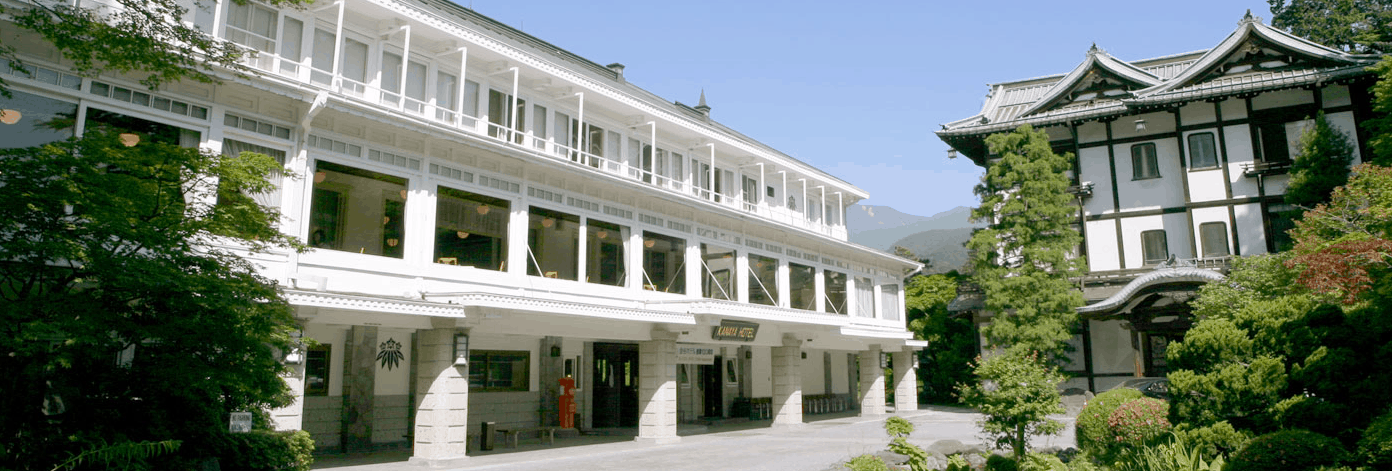
The white structure on the left is the main building at the Nikko Kanaya Hotel, and the lobby and gift shop are housed on the ground floor.
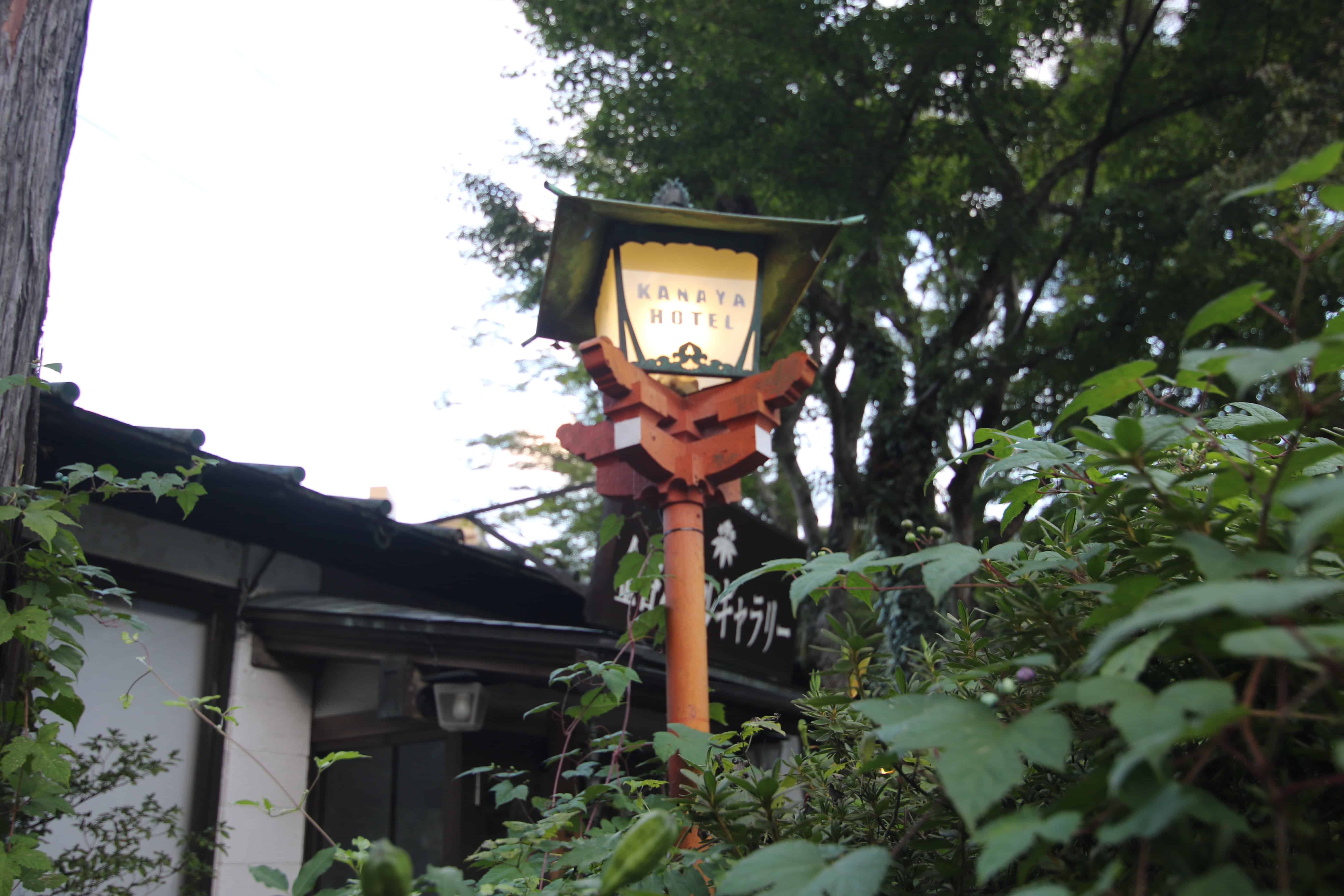
While charming on the outside, you don’t fully appreciate the depth and breadth of what the property has to offer until you you walk into its lobby. You are met with “rich wood visuals” everywhere, from the reception desk to the beams which hold the structure up. The paneling is beautiful as are the panes along the floors and ceilings — there’s also a wood railing and winding staircase which leads you up to the upper floors should you opt to walk versus take the elevator, which we frequently did because there was simply so much to look at along the way.
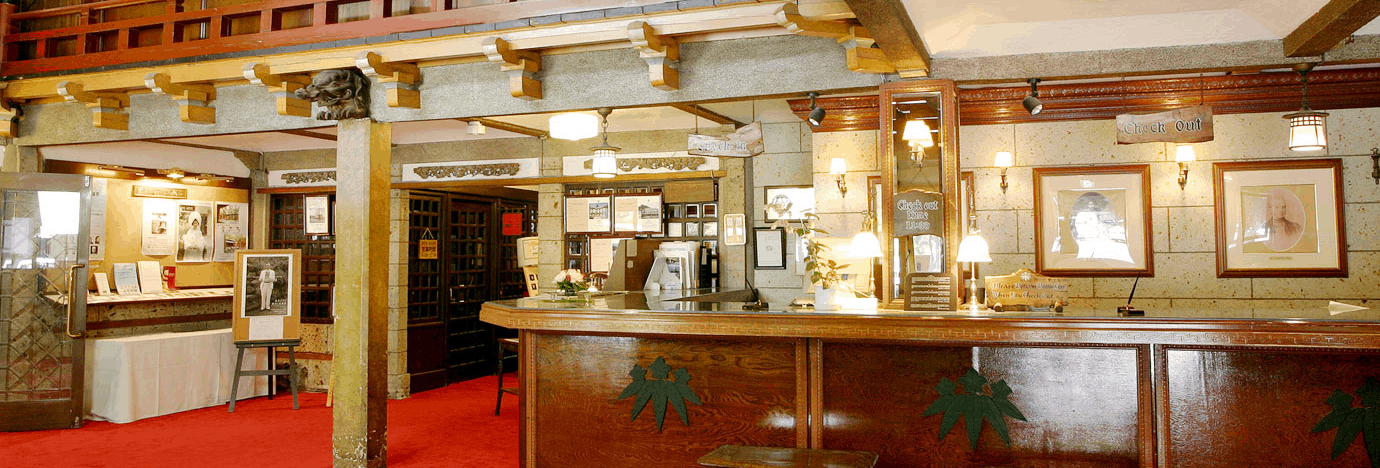
The lobby of the Nikko Kanaya Hotel
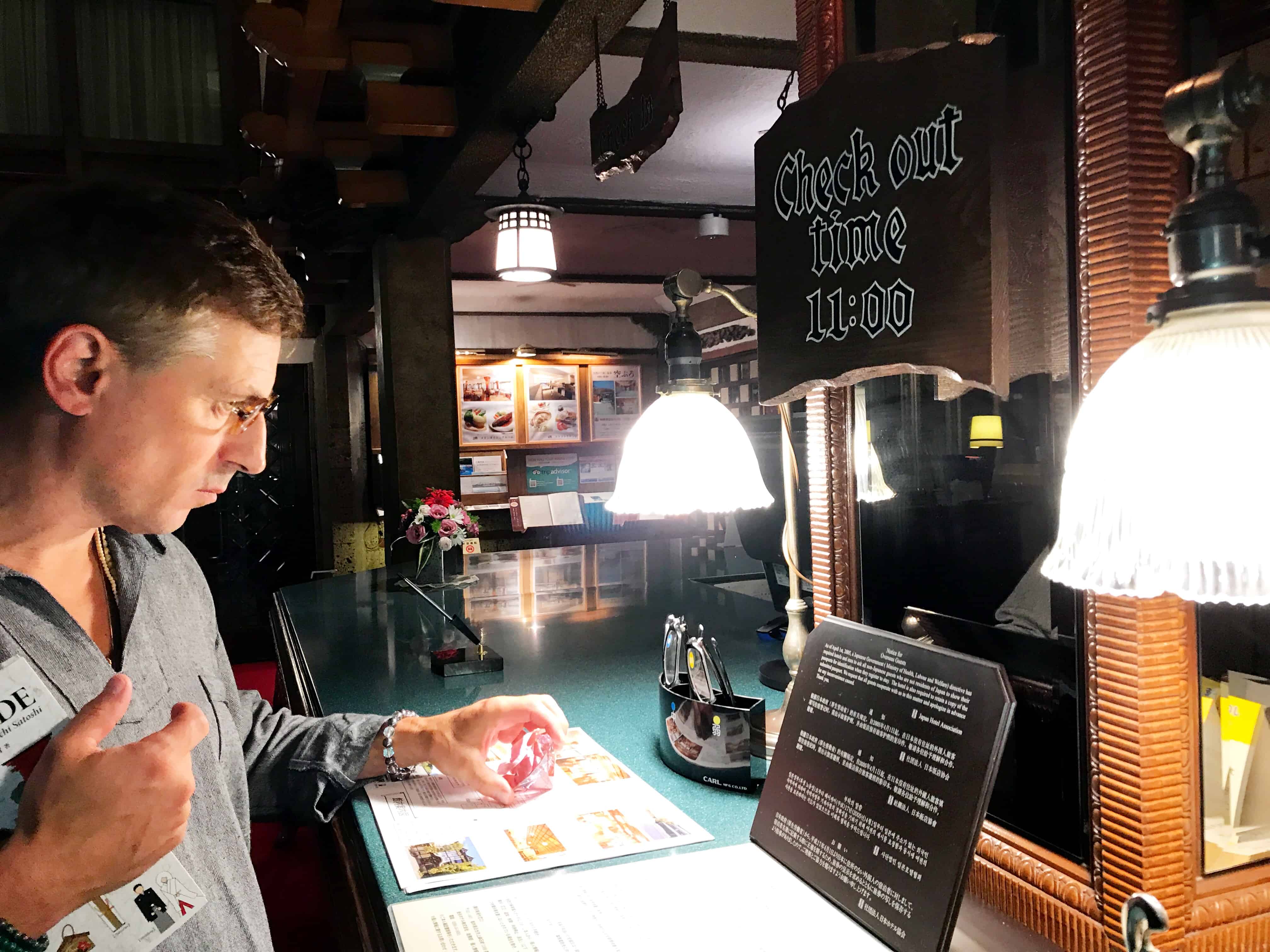
Exploring the lobby and reception area at night.
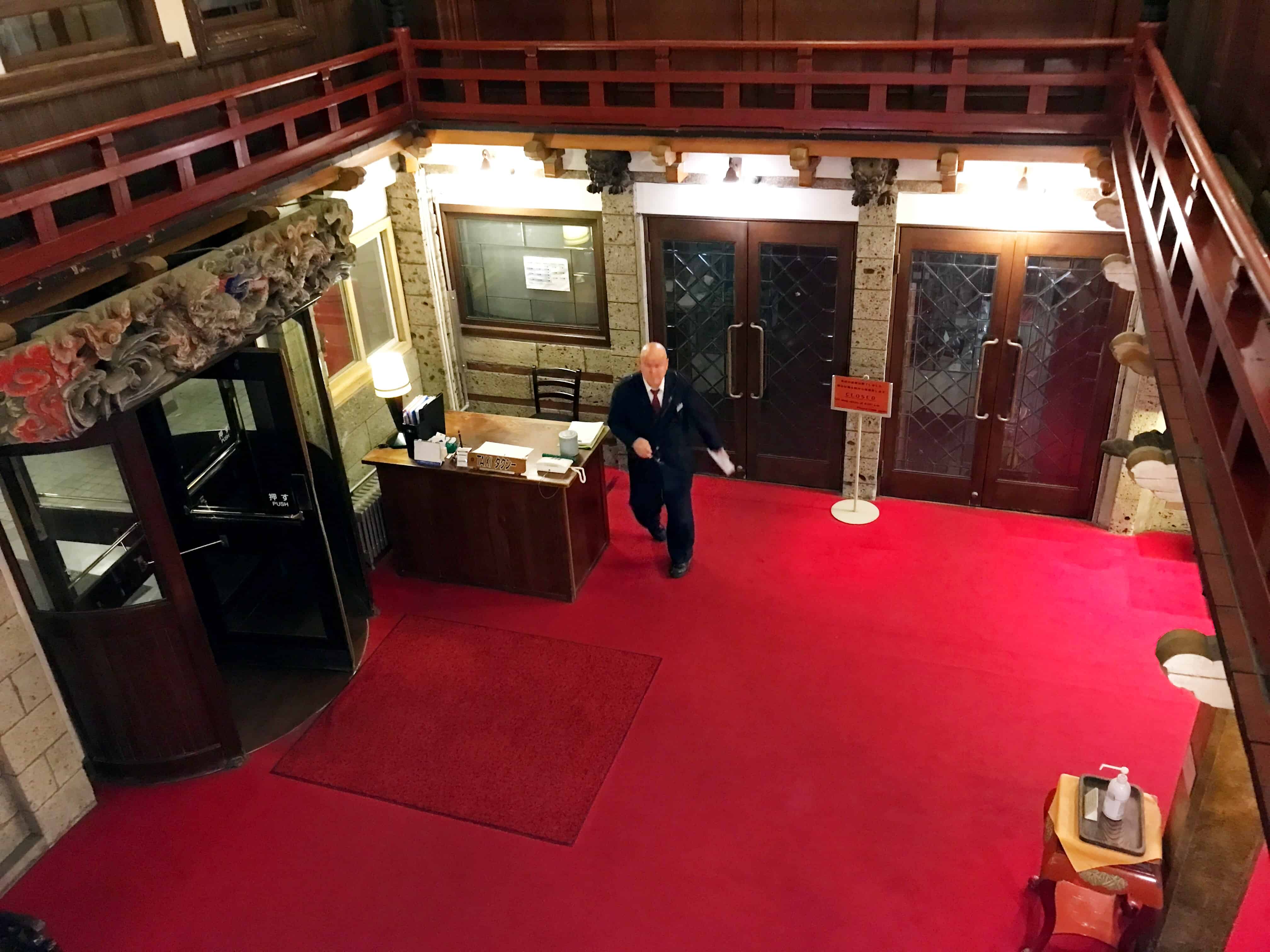
Below, the beautiful staircase.
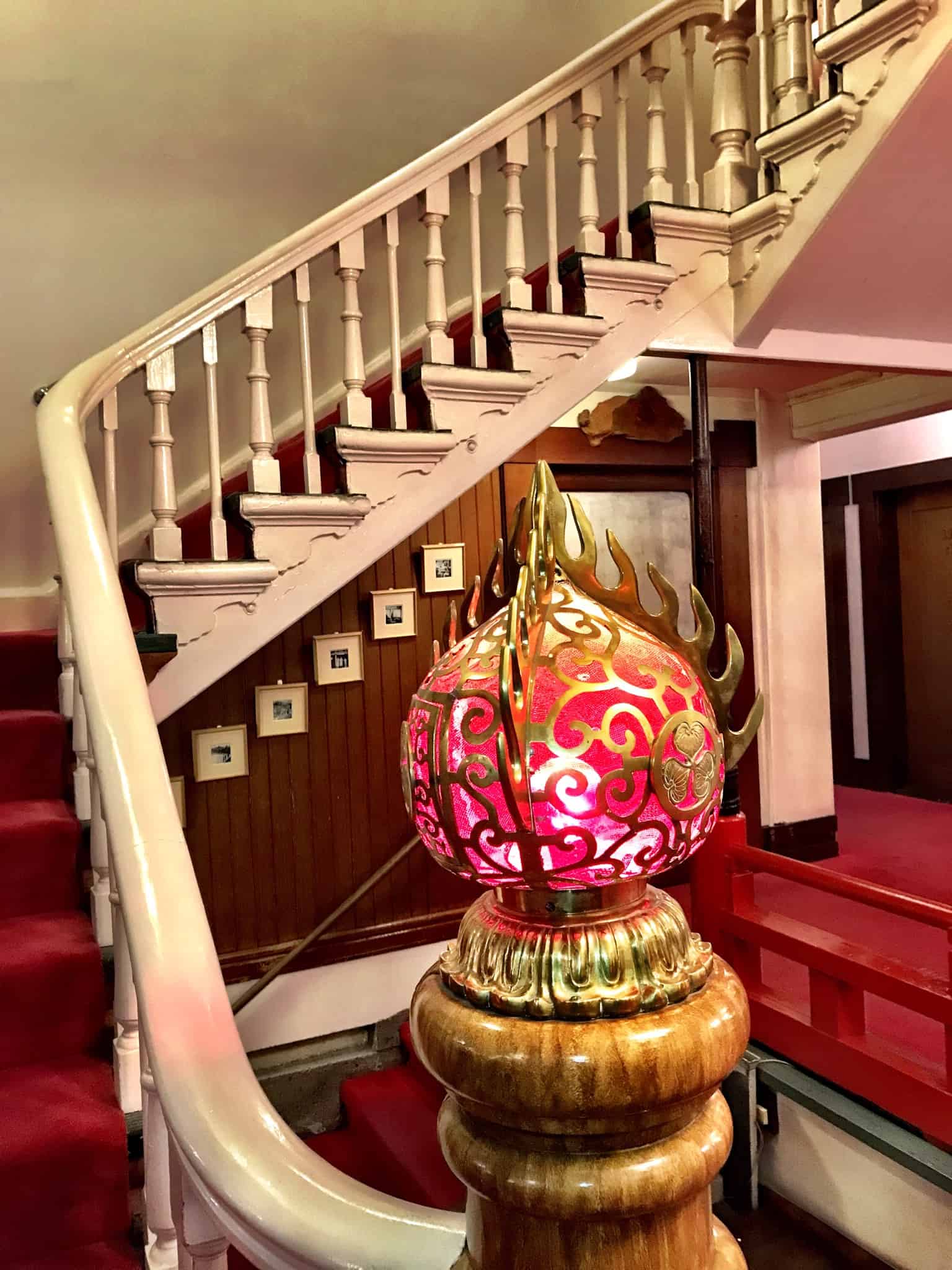
If you come from the states, the history is mind blowing for first time visitors to Japan. With a history of more than 130 years, many diplomats and intellectuals visited the Nikko Kanaya Hotel, as well as other famous authors, musicians, politicians and visionaries. 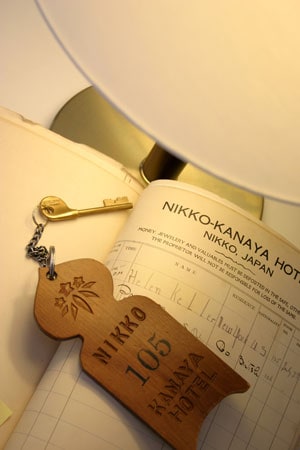
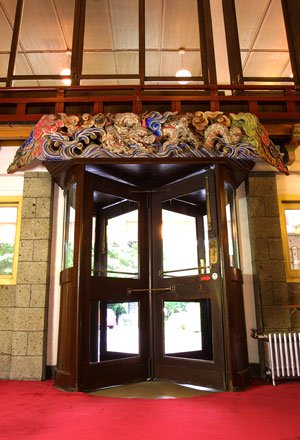
The revolving door.
While not so known in the west, Gagaku performer and musician Zenichiro Kanaya stayed at the property in 1873 while it was still an inn and before it was rebuilt. Einstein came to Japan immediately after the Taisho period (1922) and Helen Keller came to Japan during the early Showa period (1937).
Other notables who came to and/or stayed at the hotel include Jiro Shirasu, Lou Gehrig, Anne Sullivan, former President Eisenhower, Hideki Yukawa, Indira Gandhi, Eleanor Roosevelt and Shigeru Yoshida. The signatures of people who have a history in history are written in a book that has been around since the Meiji period and there are also all the records of the celebrities who have visited the hotel in the exhibition corner adjacent to the lobby on the ground floor.
The sculptures and art throughout the property are equally impressive. For example, the main building was a colonial-style two-story building with a spacious veranda until around 1945. In 1946, the main building was taken down, and beautiful revolving door now there was used in the early Showa era before the main building was rebuilt.
The other impressive thing about the hotel are the fine touches throughout, and the art, which is not only plastered on the walls, but can be found in the most intricate of things, from clocks and ancient boxes, ceilings and banisters, to bowls, vases, storage units and shelves.
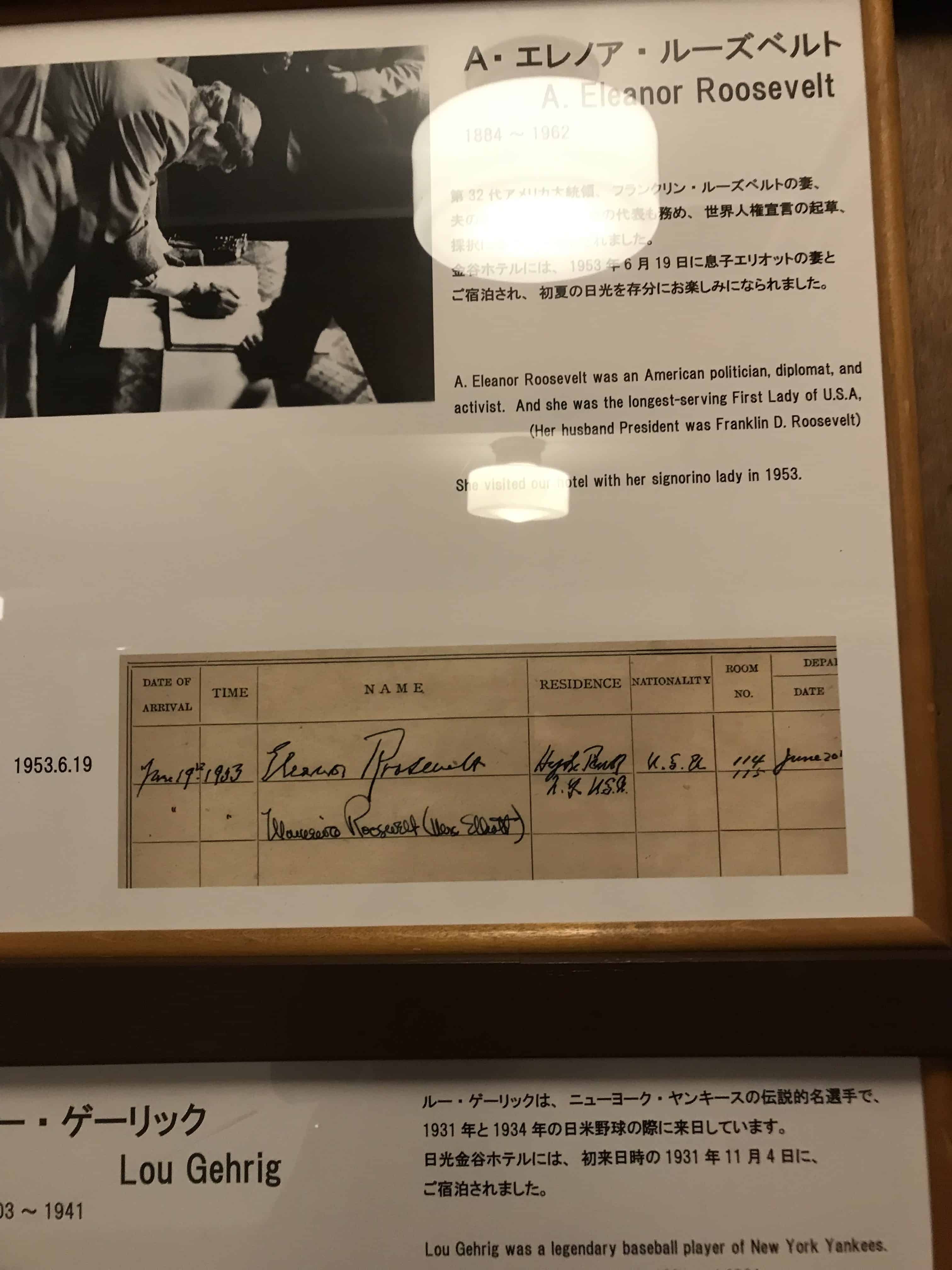
Art, Sculptures & History
The hotel has been influenced by Nikko Toshogu because the founder Zenichiro Kanaya apparently worked for Toshogu. Because of this, you’ll notice a lot of things that are of Toshugu style and in its influence in the hall and throughout the hotel. Something they refer to as the “imaginary elephant” is one of them, and it seems that it was modeled after one of the many sculptures of spirits and animals in Toshogu.
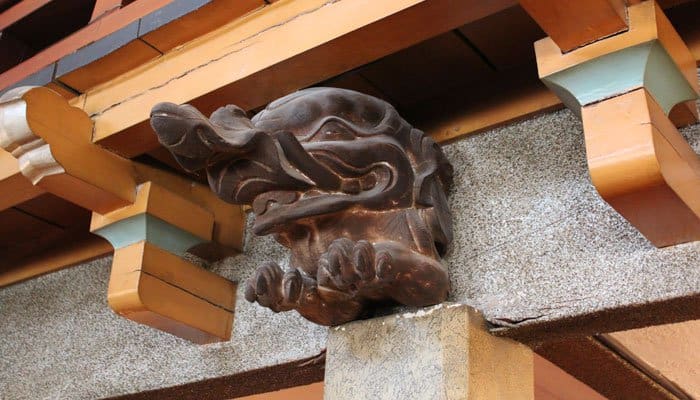
But, that’s not the only notable object, piece of artwork or remnant of a deep Japanese past. There are so many sculptures and refined beauty (the walls and ceilings will have you at hello), that you can marvel at things all afternoon, which is a great thing to do if its rainy or cold outside. We particularly loved the one known as “Karyobinga” in the main dining room — every time we walked in and out, I had to stop and look at it in detail. This work is of visionary artist Aizu Koarai’s “Yoshida Senjura”, and the material is colored with zelkova and rock paint. Goryeong Taeju is an imaginary creature whose upper body is beautiful and whose lower body is like a bird. Then there are Goddesses demonstrating their talents and beauty as well.
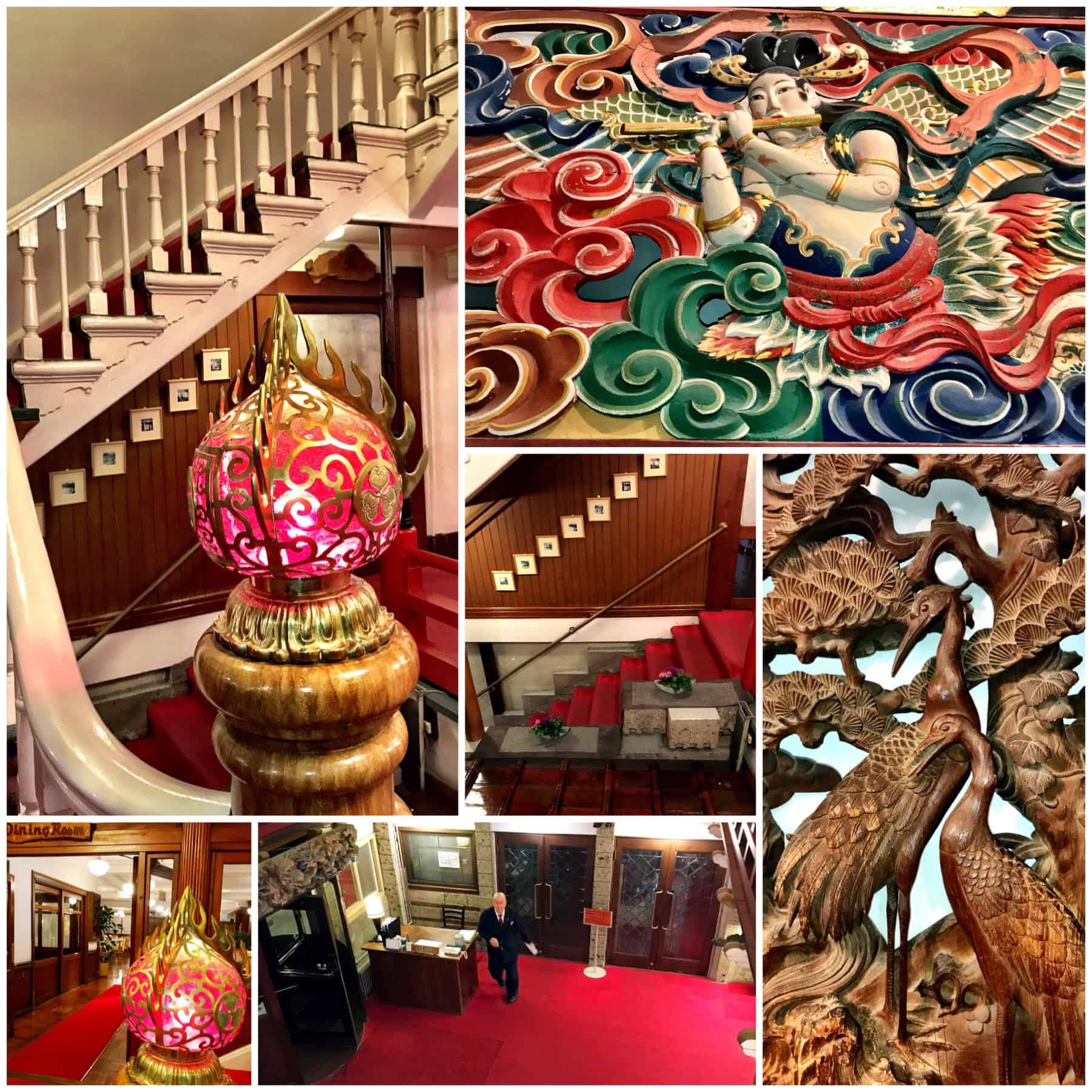
Other beautiful wooden designs and artwork can be found in the dining room as well as throughout the hall and other floors.
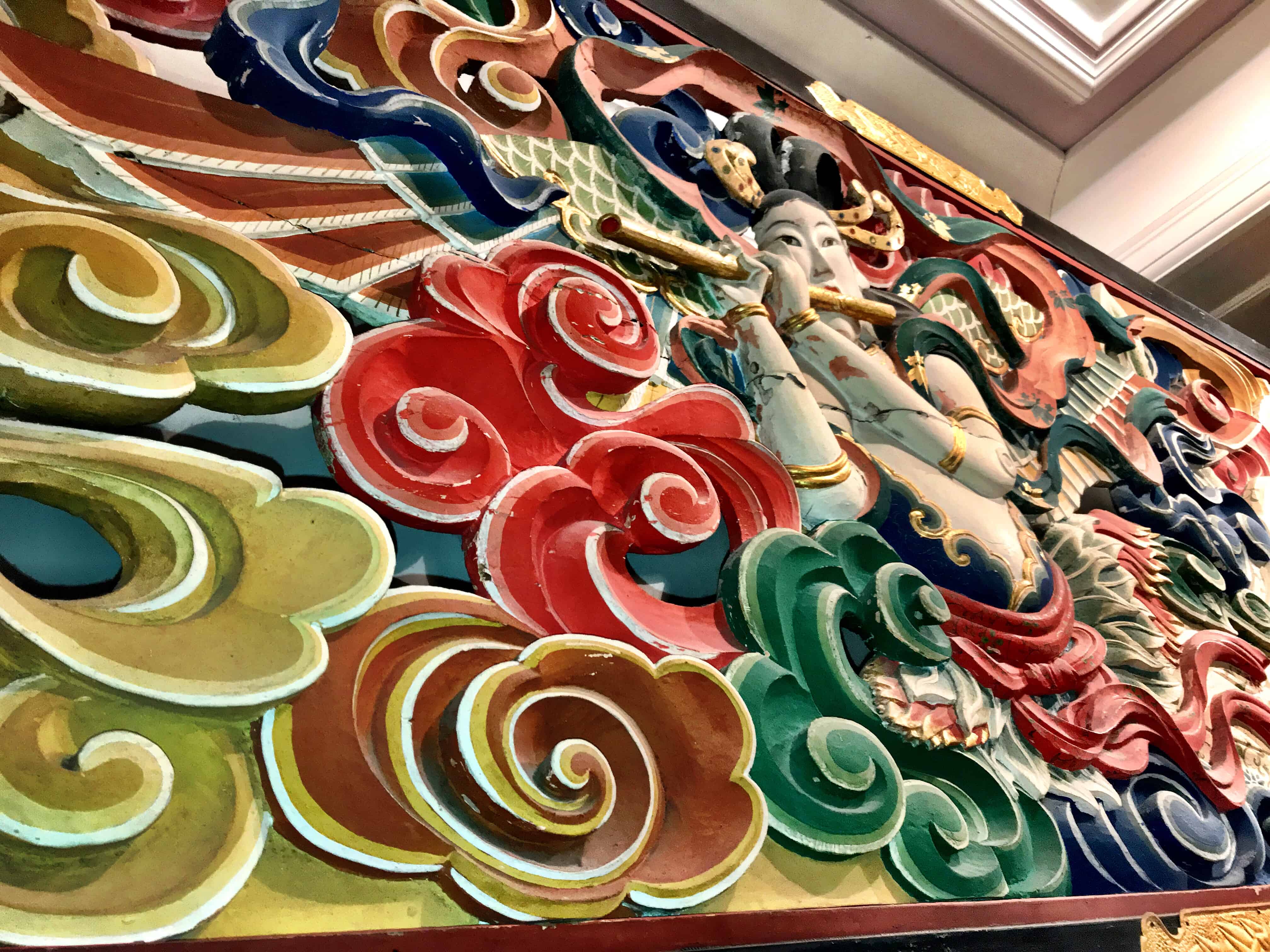
There are sculptures that decorate the three-clawed dragon and dining room on the entrance revolving door as well as random artwork of historical importance to explore. In other words, there is no shortage of things to entice you, including the gift shop on the ground floor.
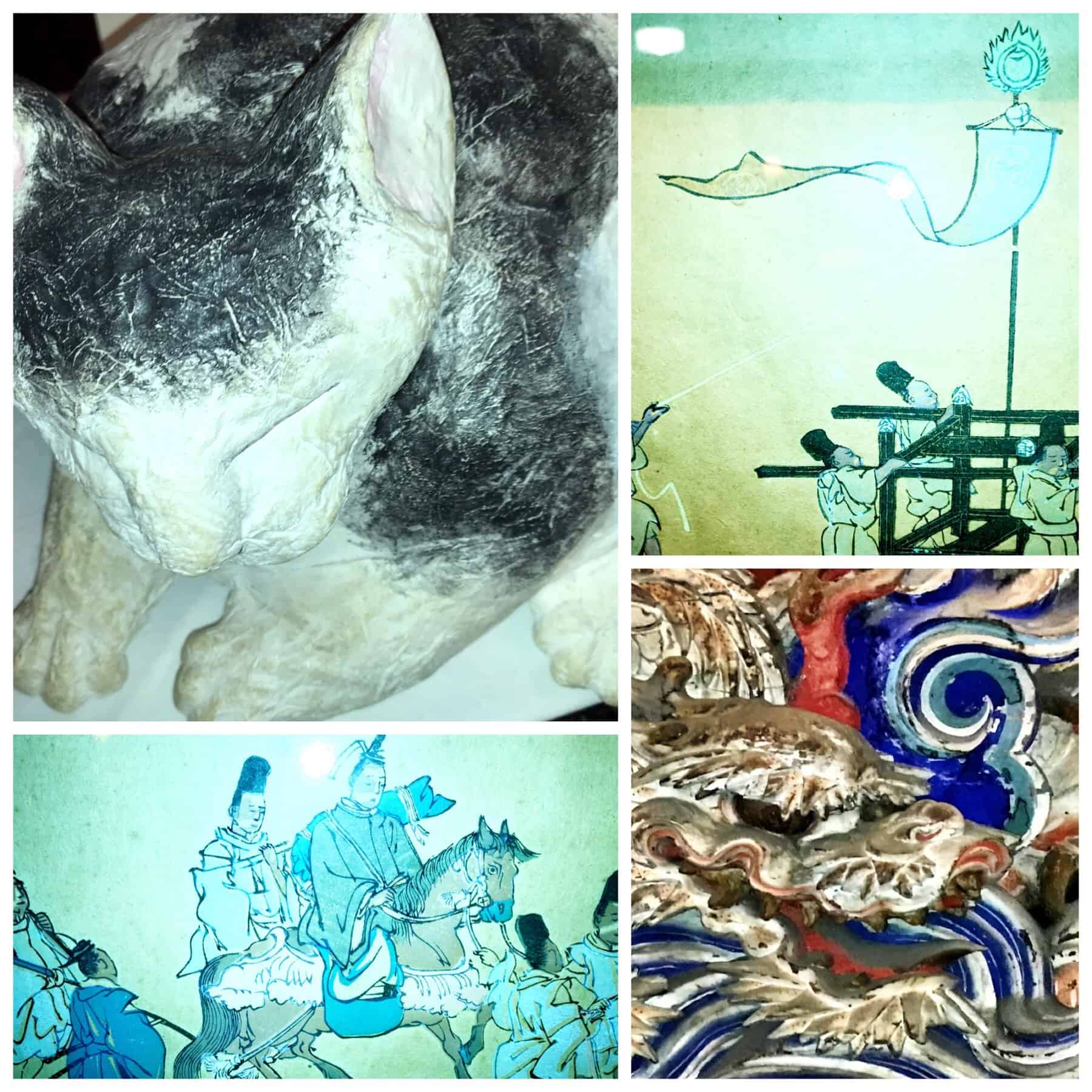
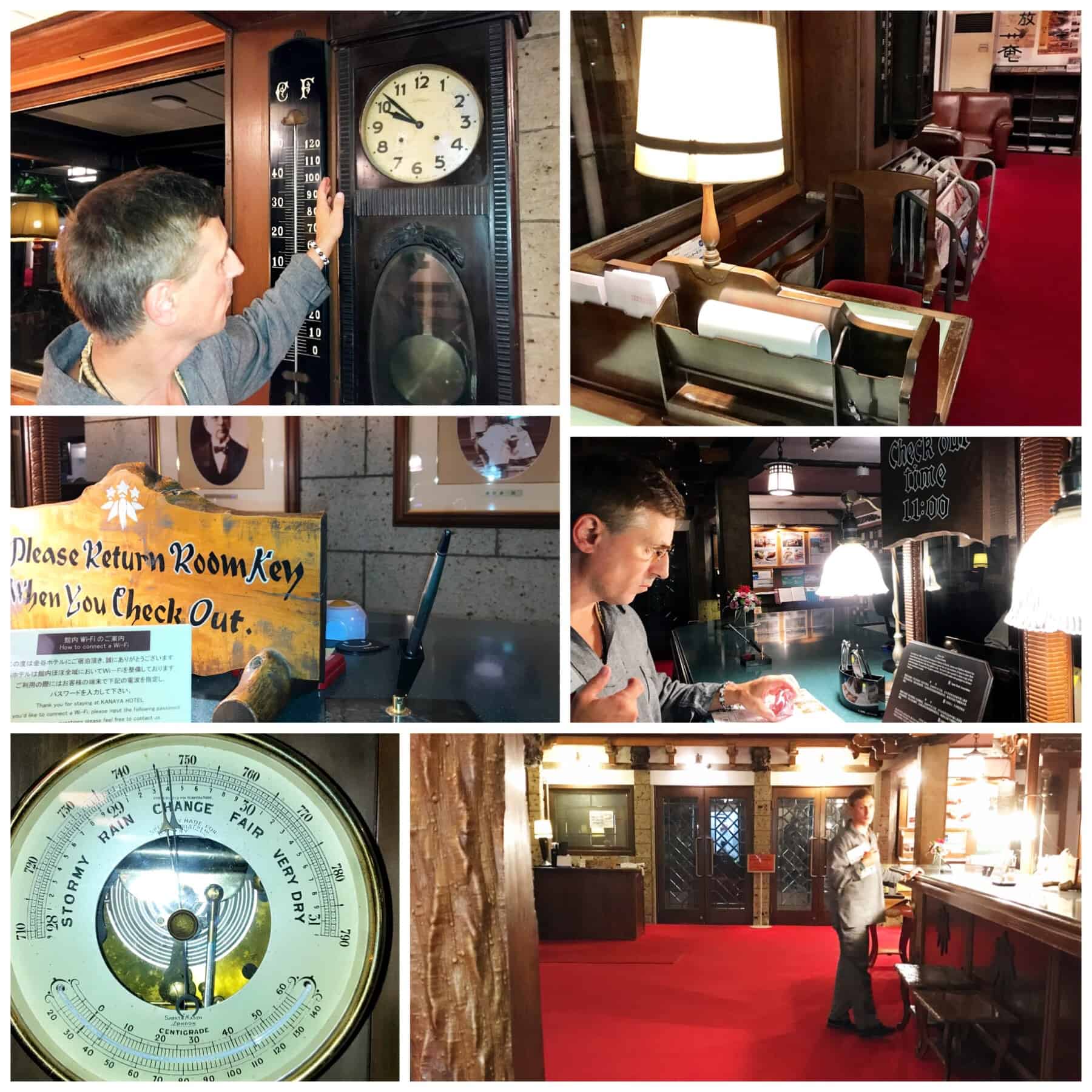
History abound at Kanaya’s historical property
As we explored several floors one evening, Anthony could feel the energy from some of the ancient objects, all with their own story to tell.
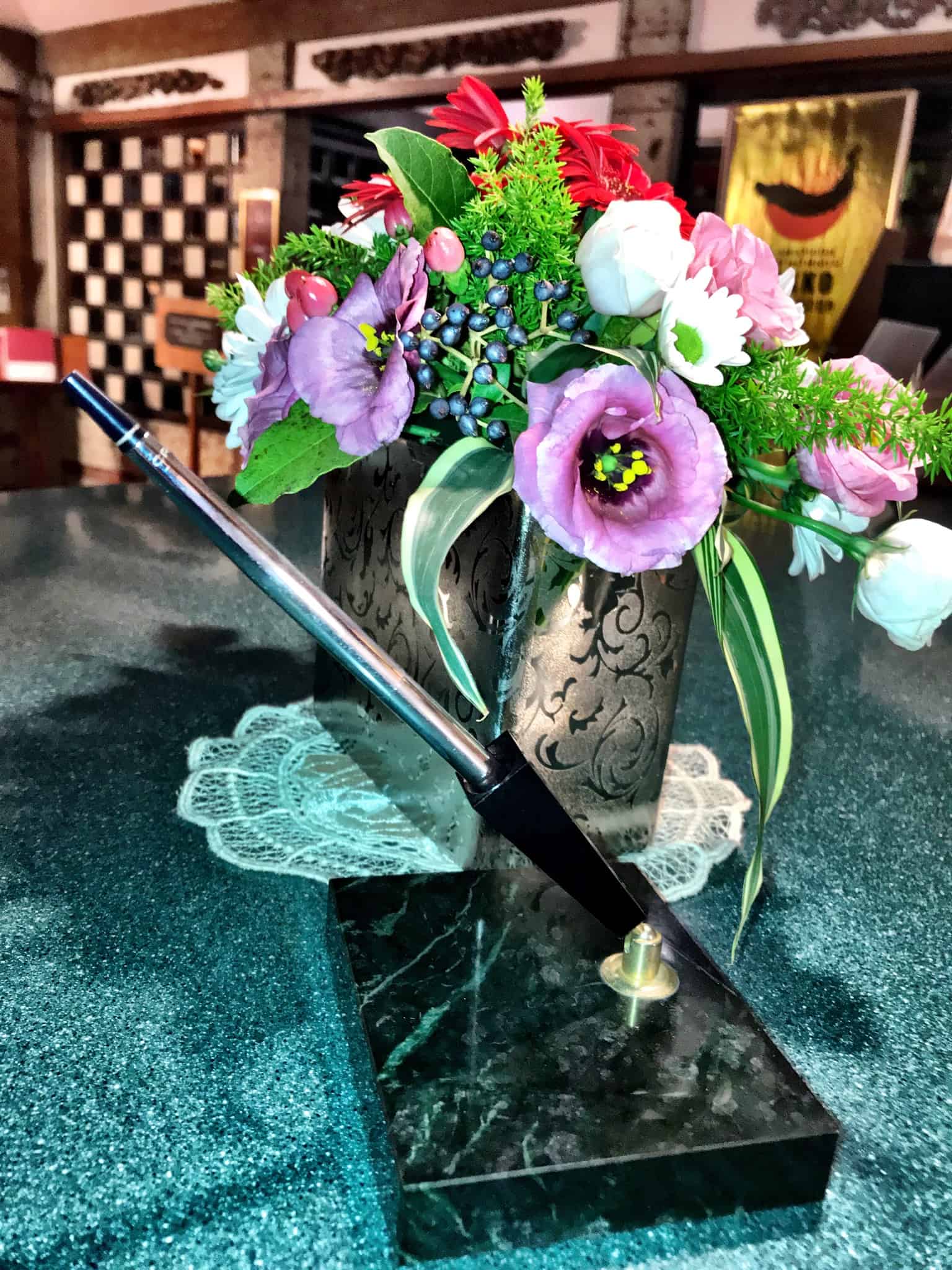
Beautiful flowers in the lobby area of the Kanaya Hotel.

Below, there are lots of areas where you can relax/lounge in the hotel, all exuding with old world charm, including the furniture itself.
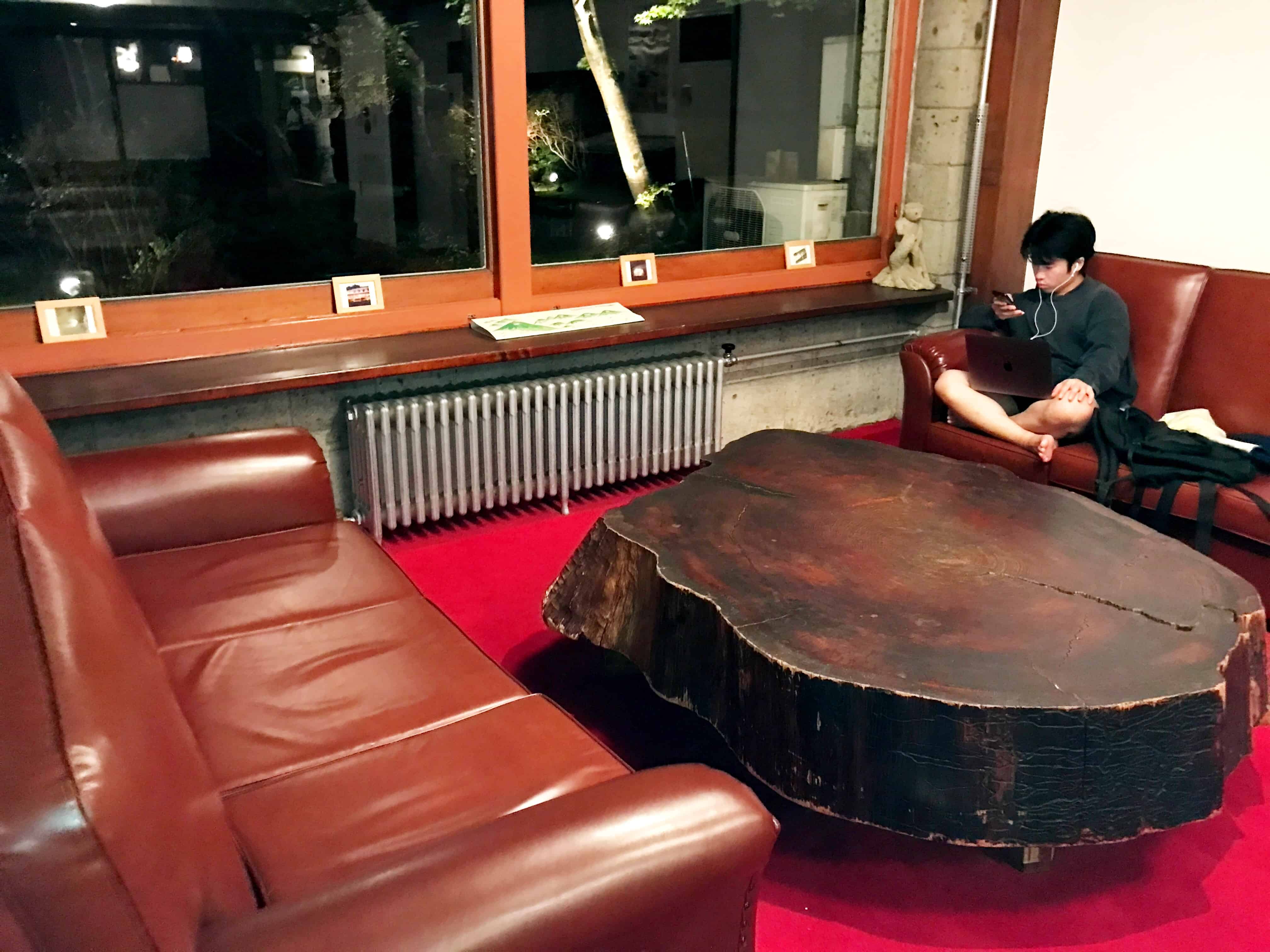
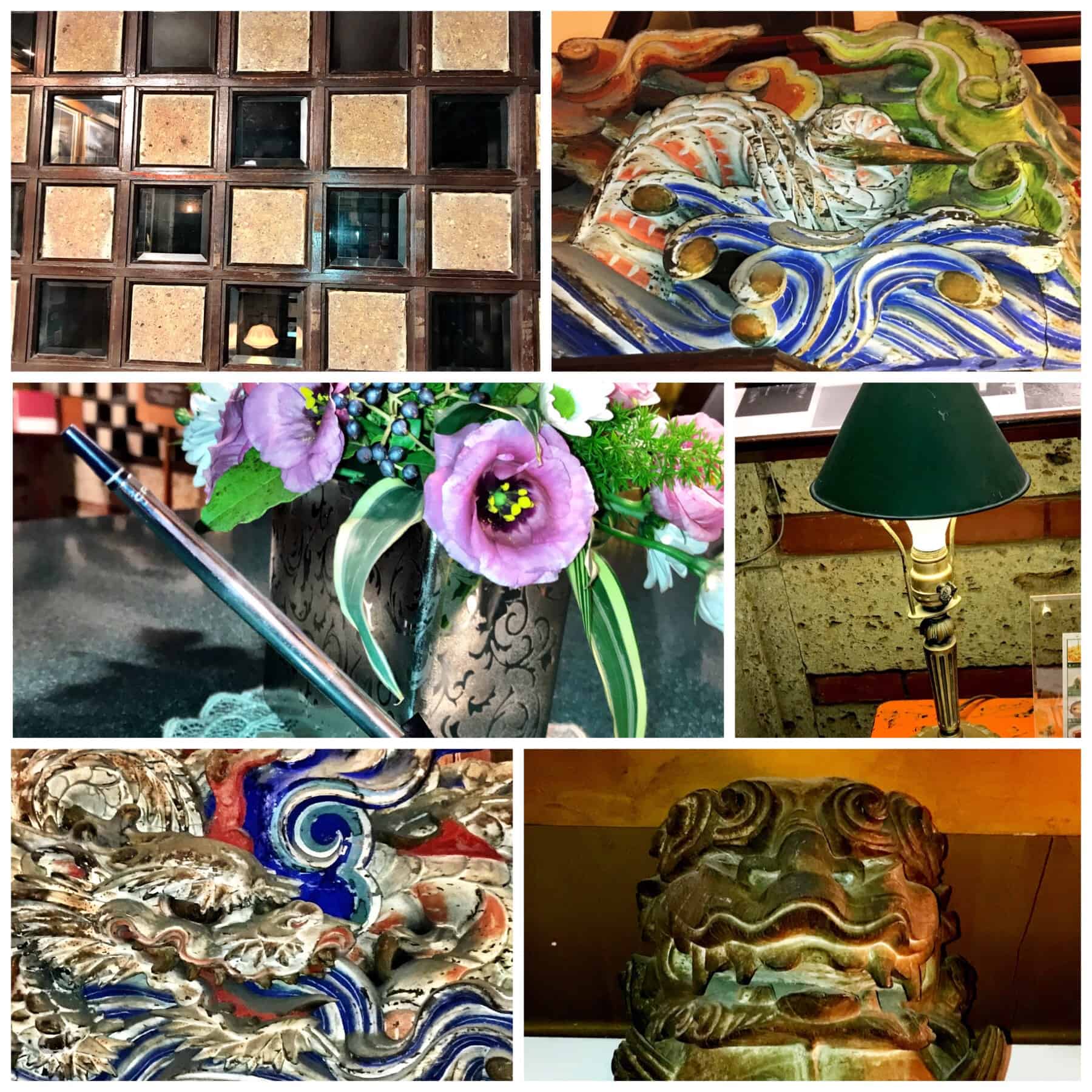
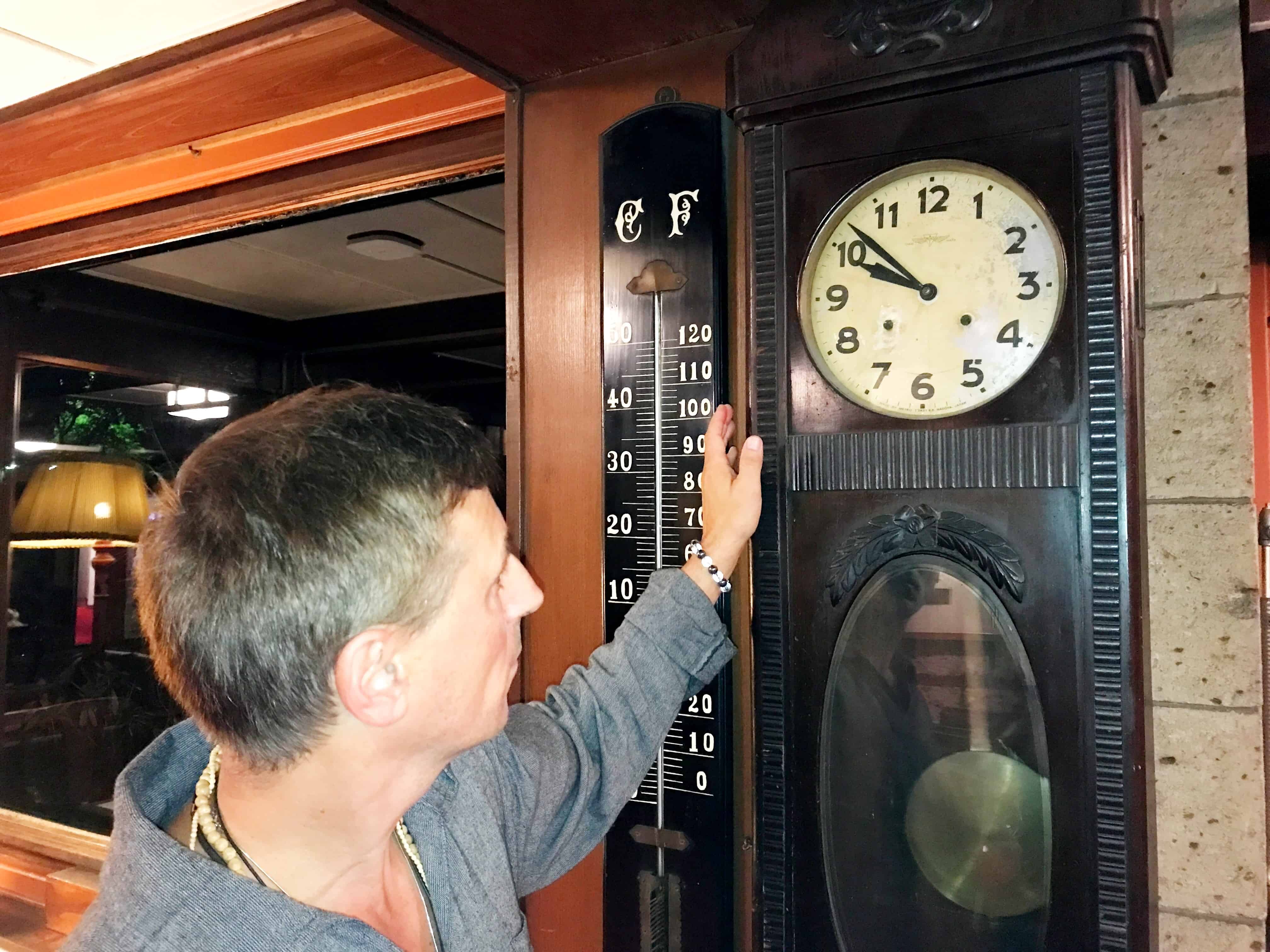
The Rooms
The rooms although basic and traditional (they purposely have kept the hotel’s original charm), are clean and streamlined, with views from many of the rooms. They are also fairly spacious – we had a little sitting area in our room as well as a small table and chairs, with a refrigerator, coffee maker and pot to make hot water/tea. Our bathroom had an old claw tub, which also served as the shower.
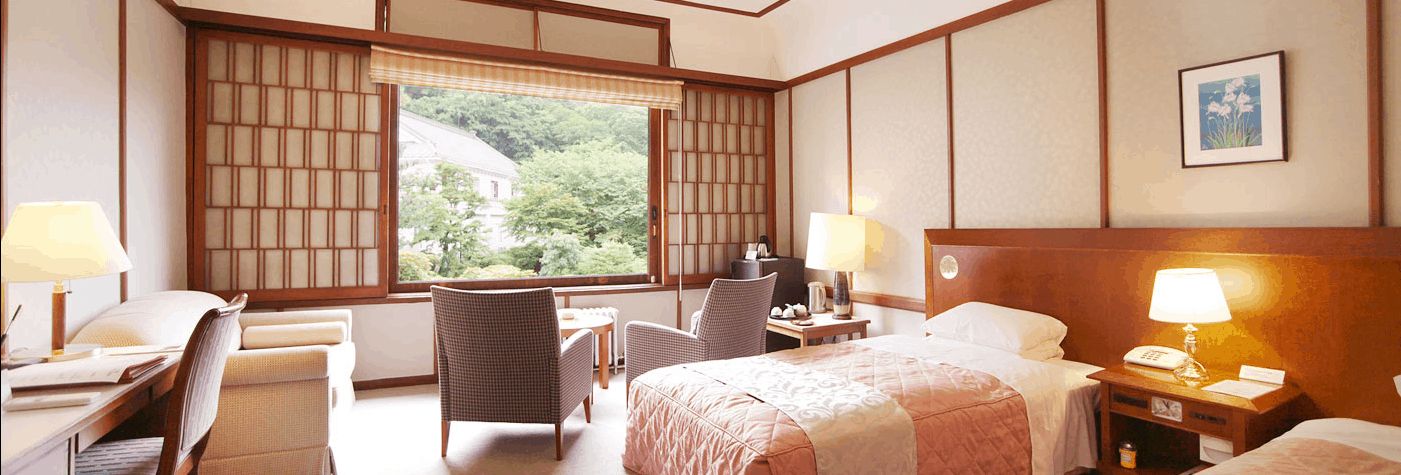
The above room was ours during our few day stay in the downtown Nikko area.

Different style rooms at the Nikko Kanaya Hotel

Note how each room is a little different and has its own unique charm, a bit like an inn (the inn that it perhaps used to be) rather than a large characterless chain hotel.

They call this one the Orange Suite, which is larger and useful for family stays.
Dining at Nikko Kanaya Hotel
Let’s start with breakfast, since the experience during the day time when you can see the decor, the ceilings, floors, and walls in bright light is as much fun as the meal itself. And, it’s incredibly interesting.
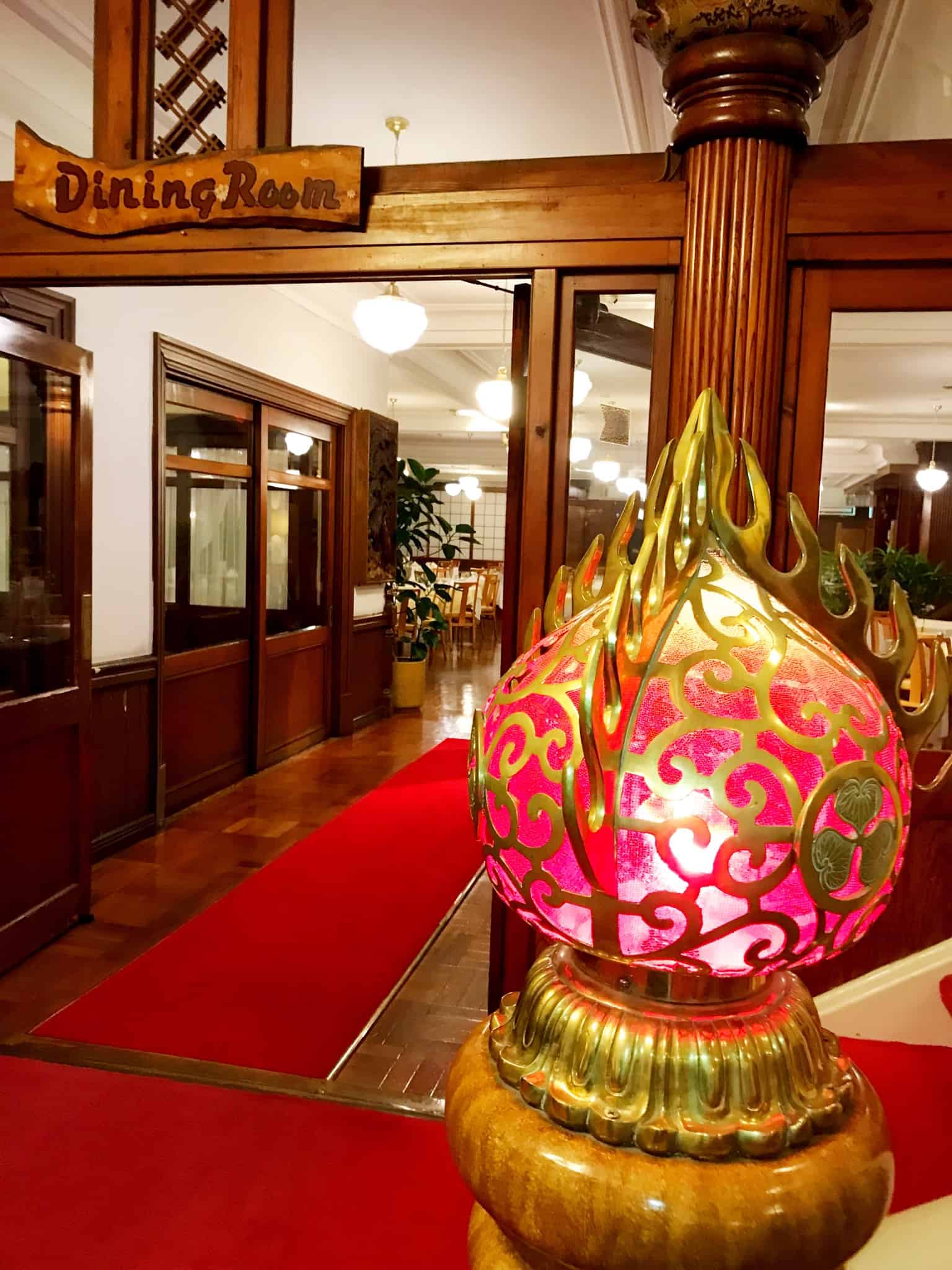
For example, take a look at this gorgeous ceiling — I couldn’t stop staring at it.
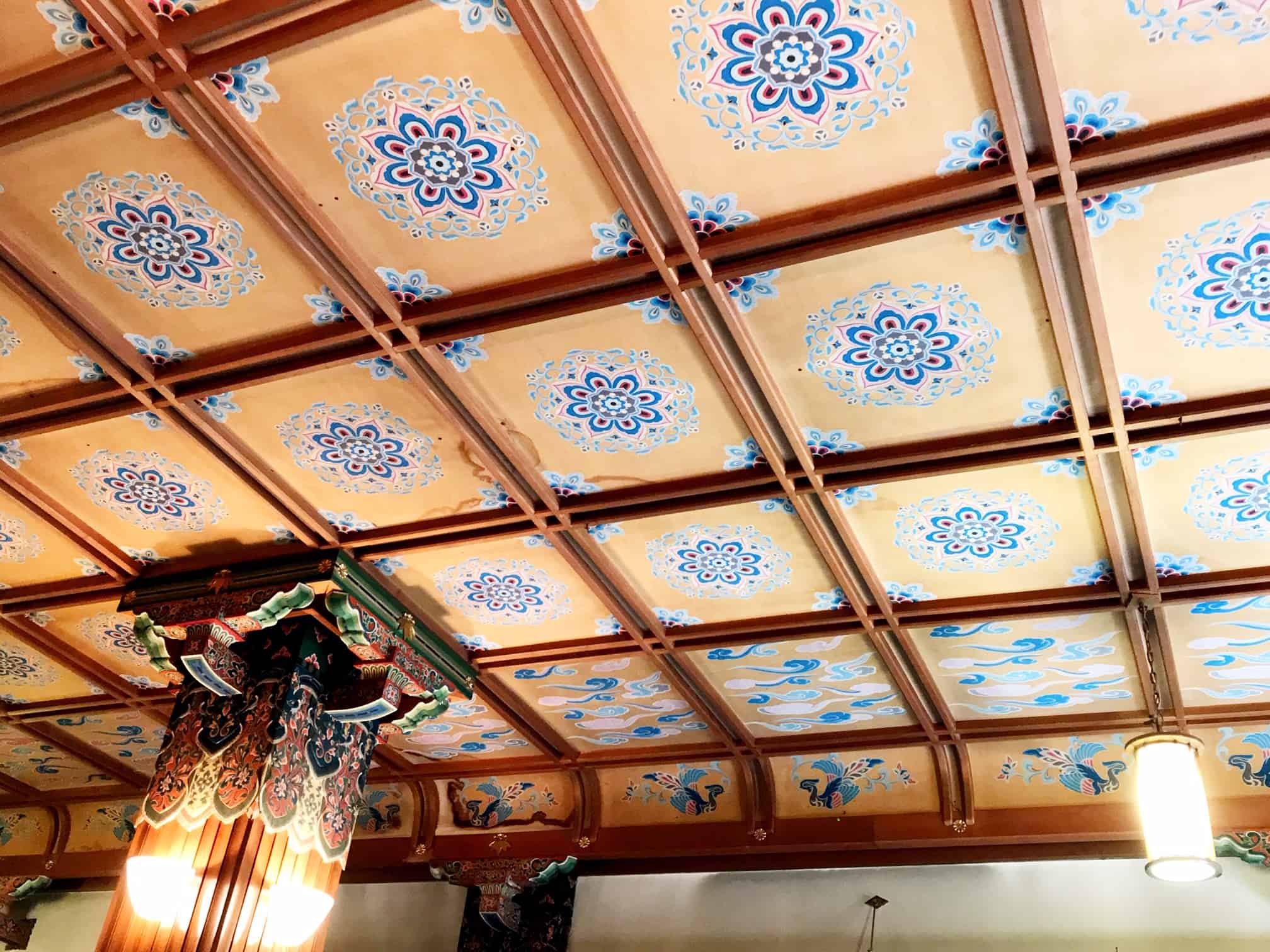
Ceilings at the Nikko Kanaya Hotel
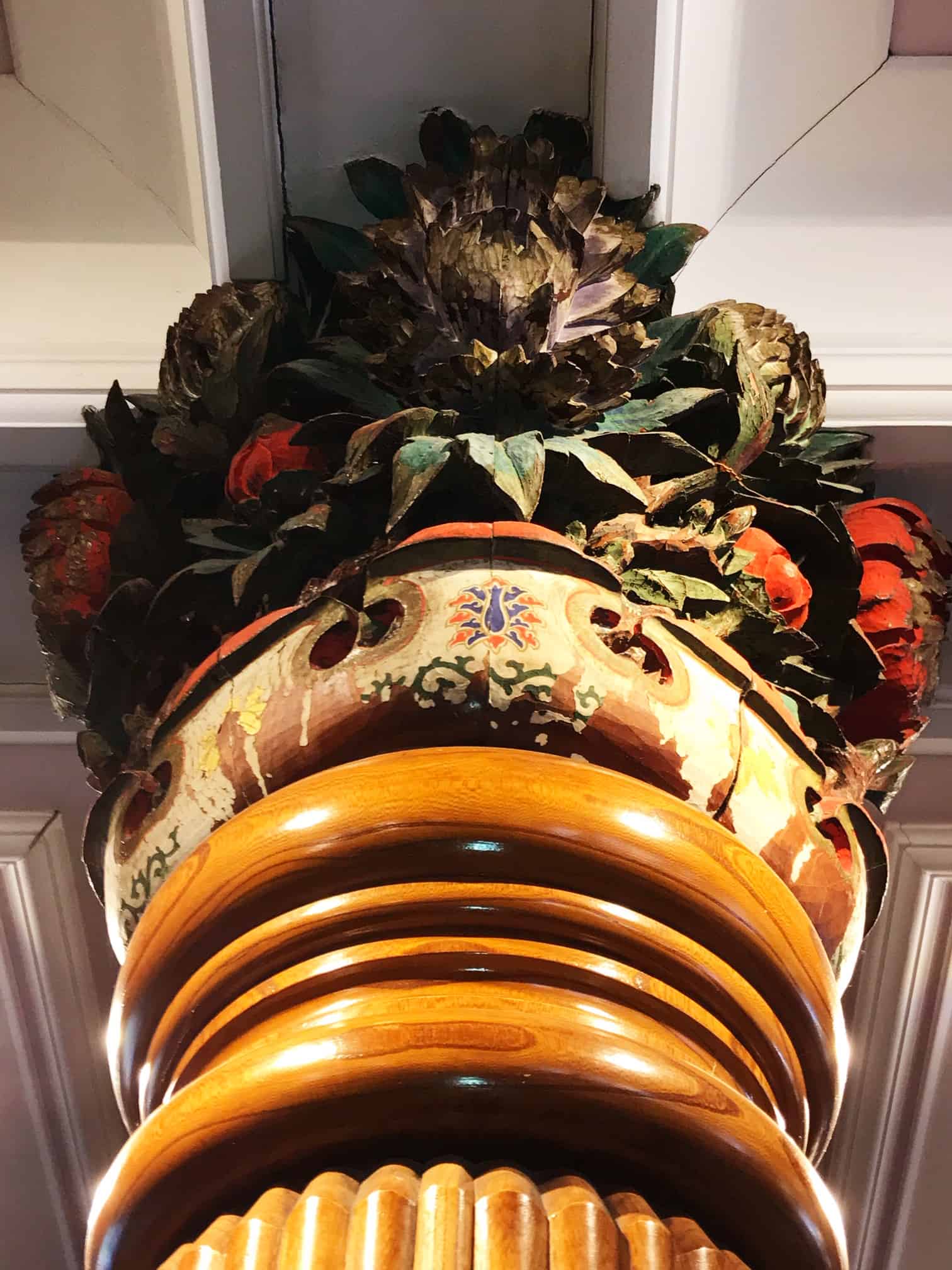
The beautiful carvings in the pillars in the main dining room.
Ahhhh yes, there’s nothing like an old fashioned morning cuppa tea served in fine china.
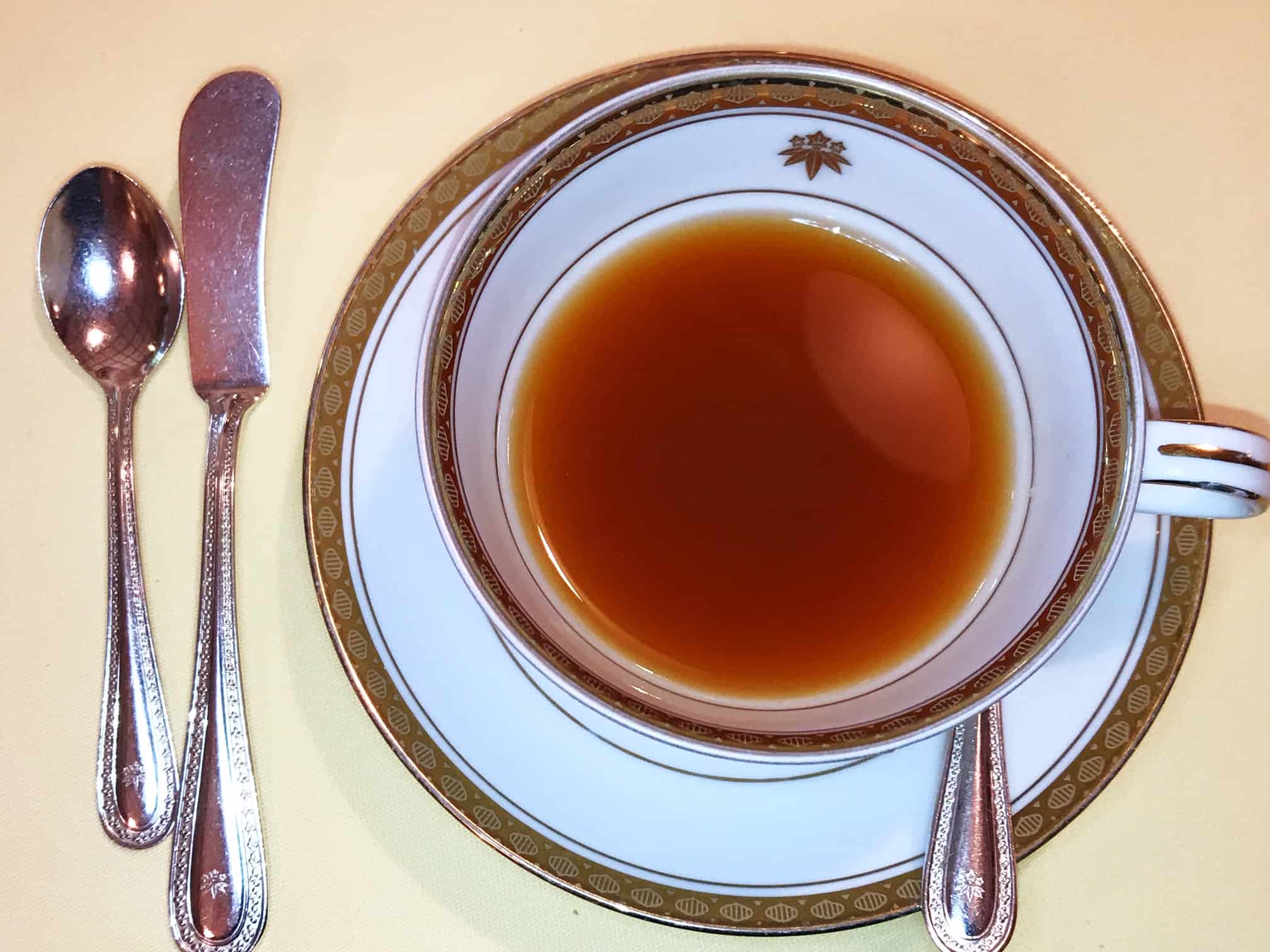
Notice how elegant the cutlery and dishes are — it’s as if it were originally designed to greet the Japanese Imperial Family as well as the Queen and King of England and time has stood still.
There are gorgeous fine tea sets on display under glass as you exit the main dining room. Most of the pottery, silverware, and glasses have the Kanaya Hotel logo and the word “Kanaya” on the back, including Noritake and Toyo pottery from the Taisho period all the way through to the pre-war period.
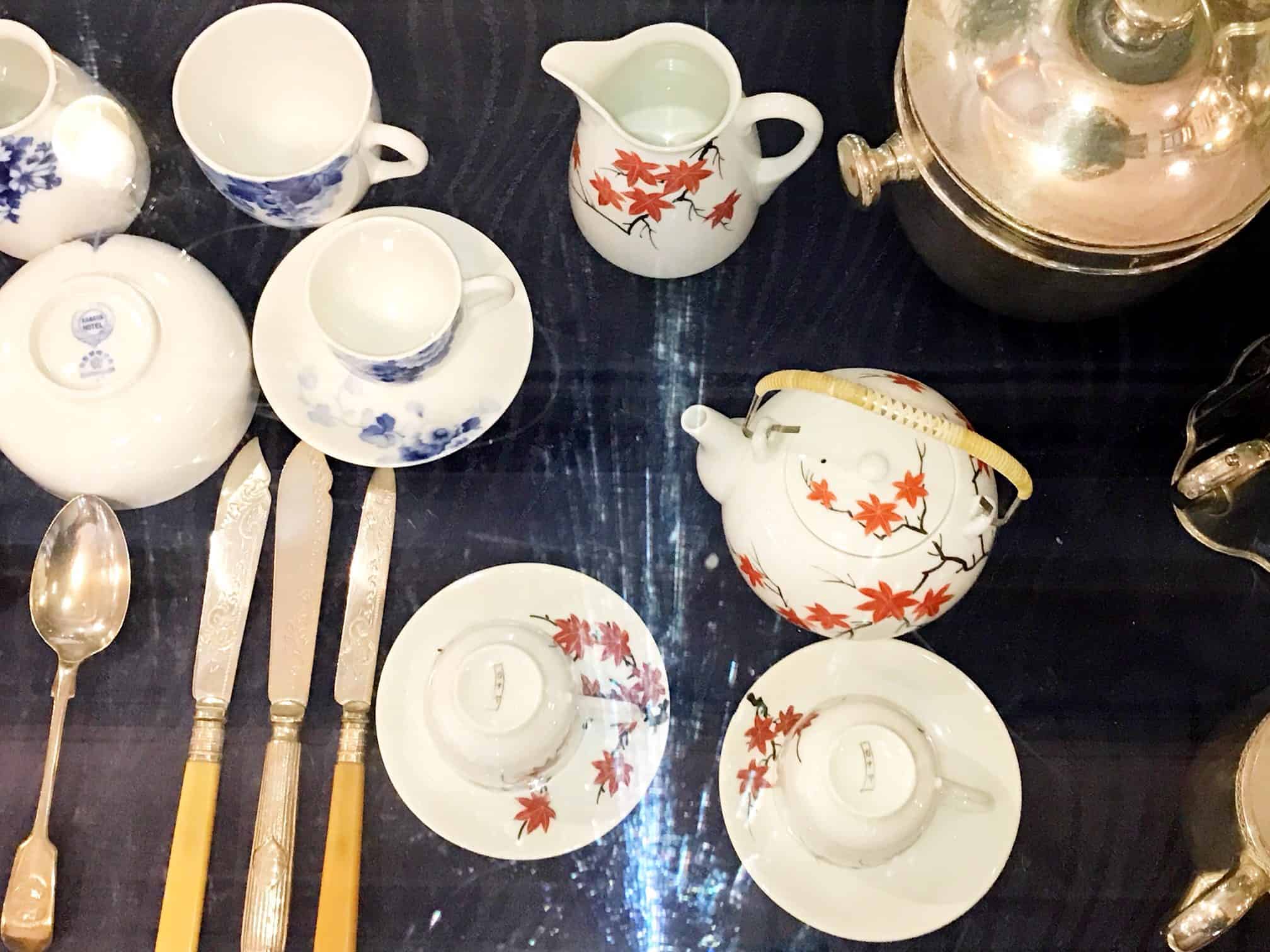
Decadent and creative wood carvings of old are scattered throughout the property, in the dining room, the main sitting areas and the lobby.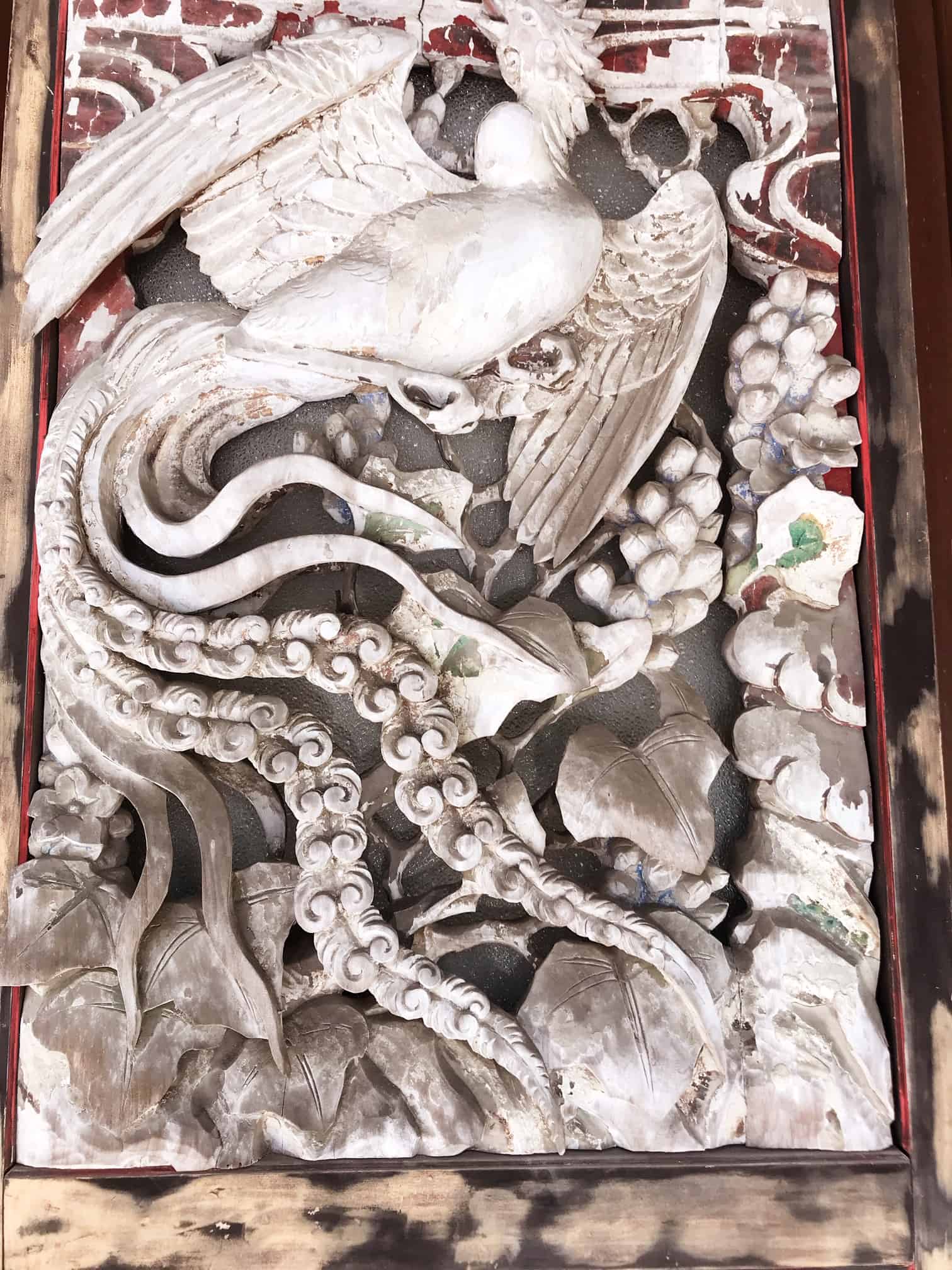
Breakfast with our incredible guide Ms. Maruta. She was truly amazing — we feel blessed to have had her with us.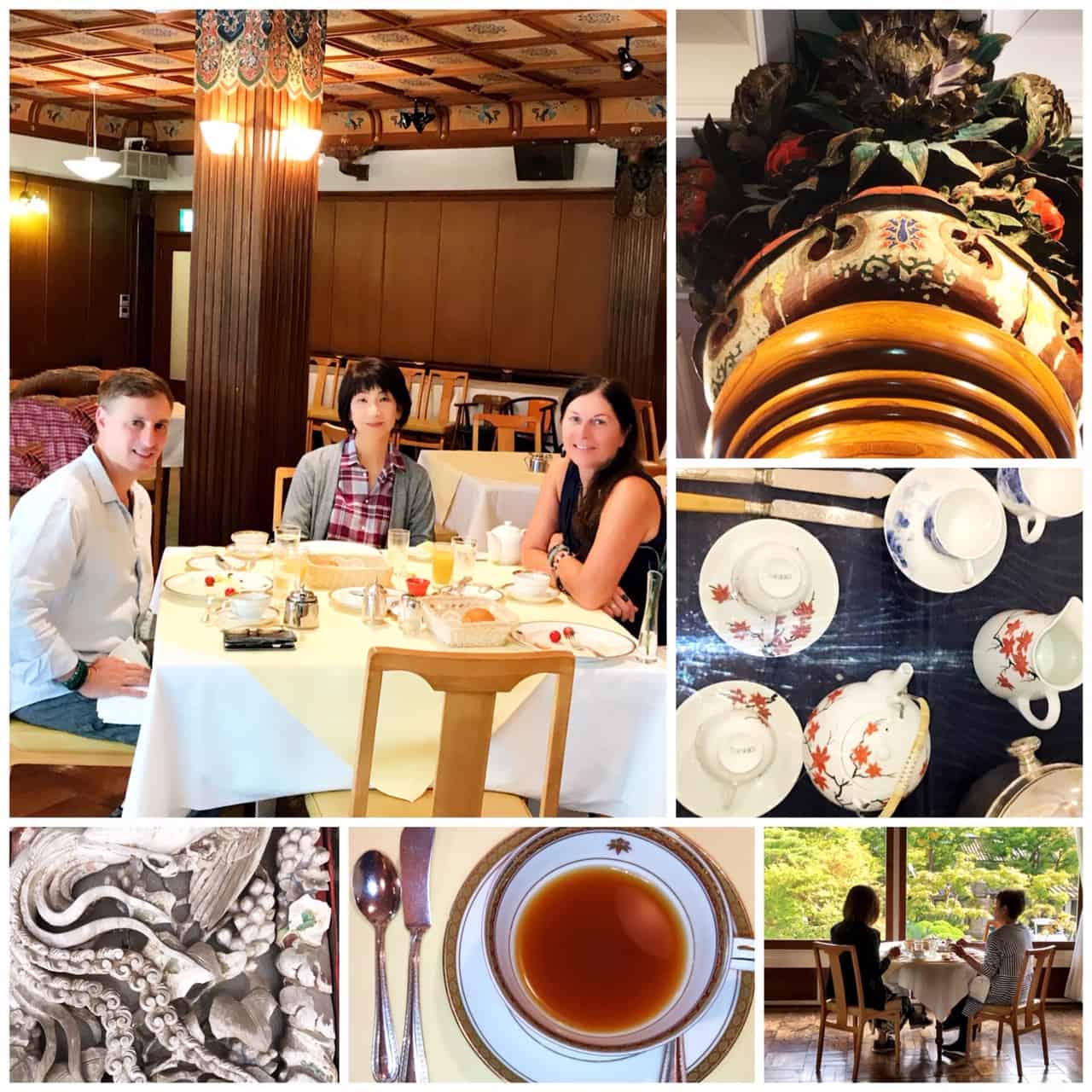
We decided to try both their Western and Japanese style breakfasts since we were there for a few days. Above and below, French breakfast in the main dining room.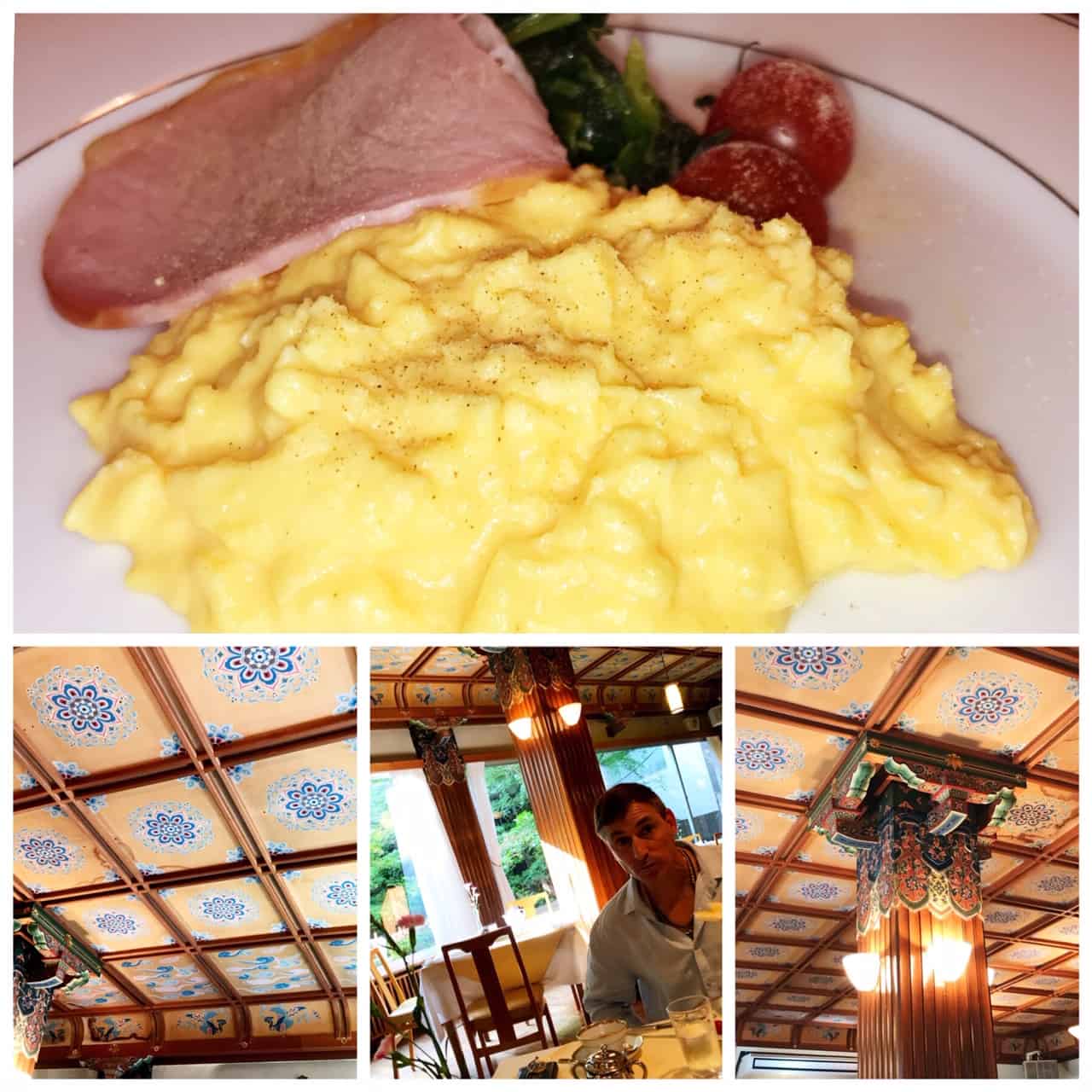
Below, our Japanese style breakfast.
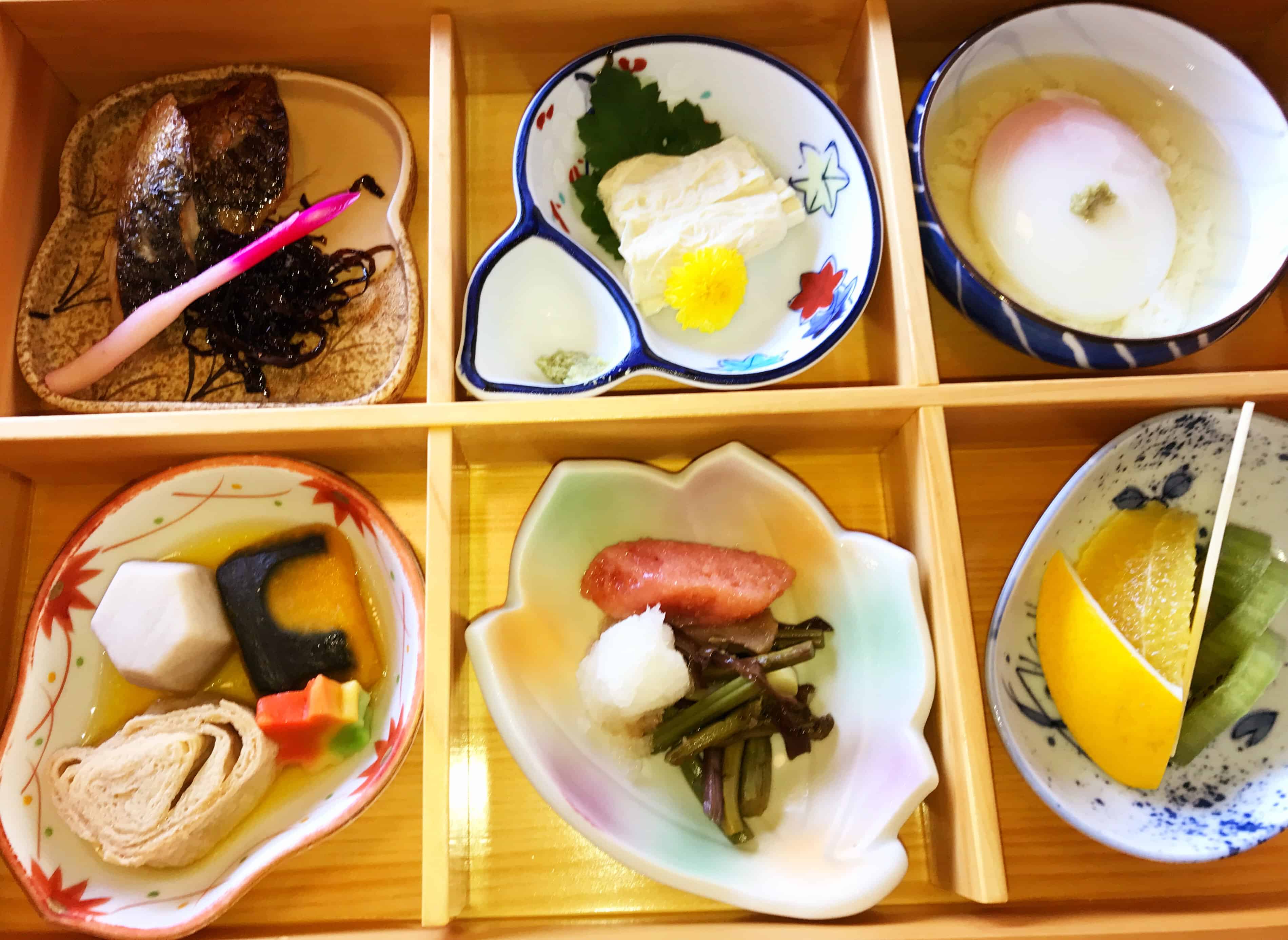
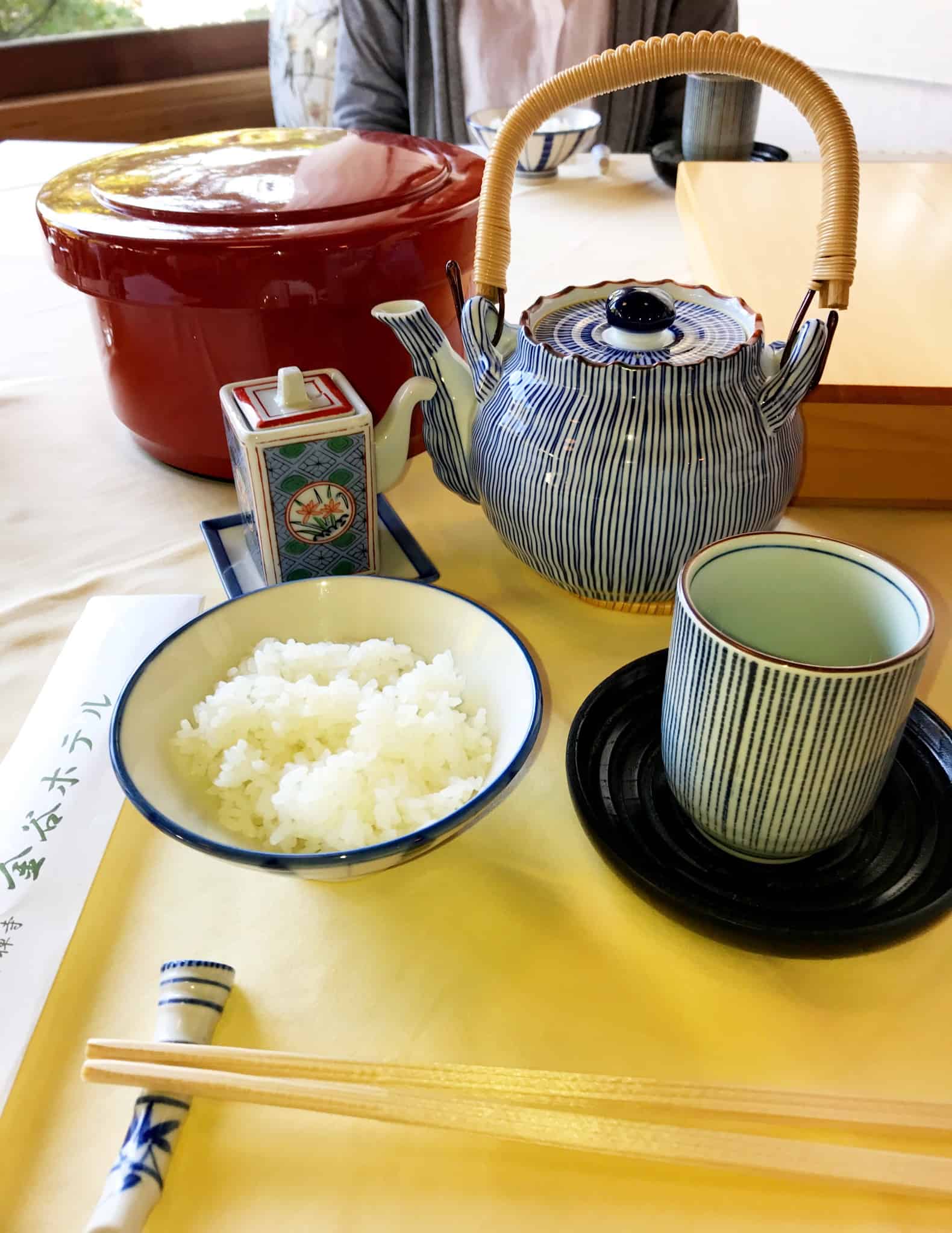
Dinner, French Style
Dinner was divine, both from a service perspective and the food. I was also surprised by the wine list. We had a French style dinner on the evening we arrived and they started us off with Sea Bream in a cream sauce which Anthony paired with a crisp Toshu wine from Japan.
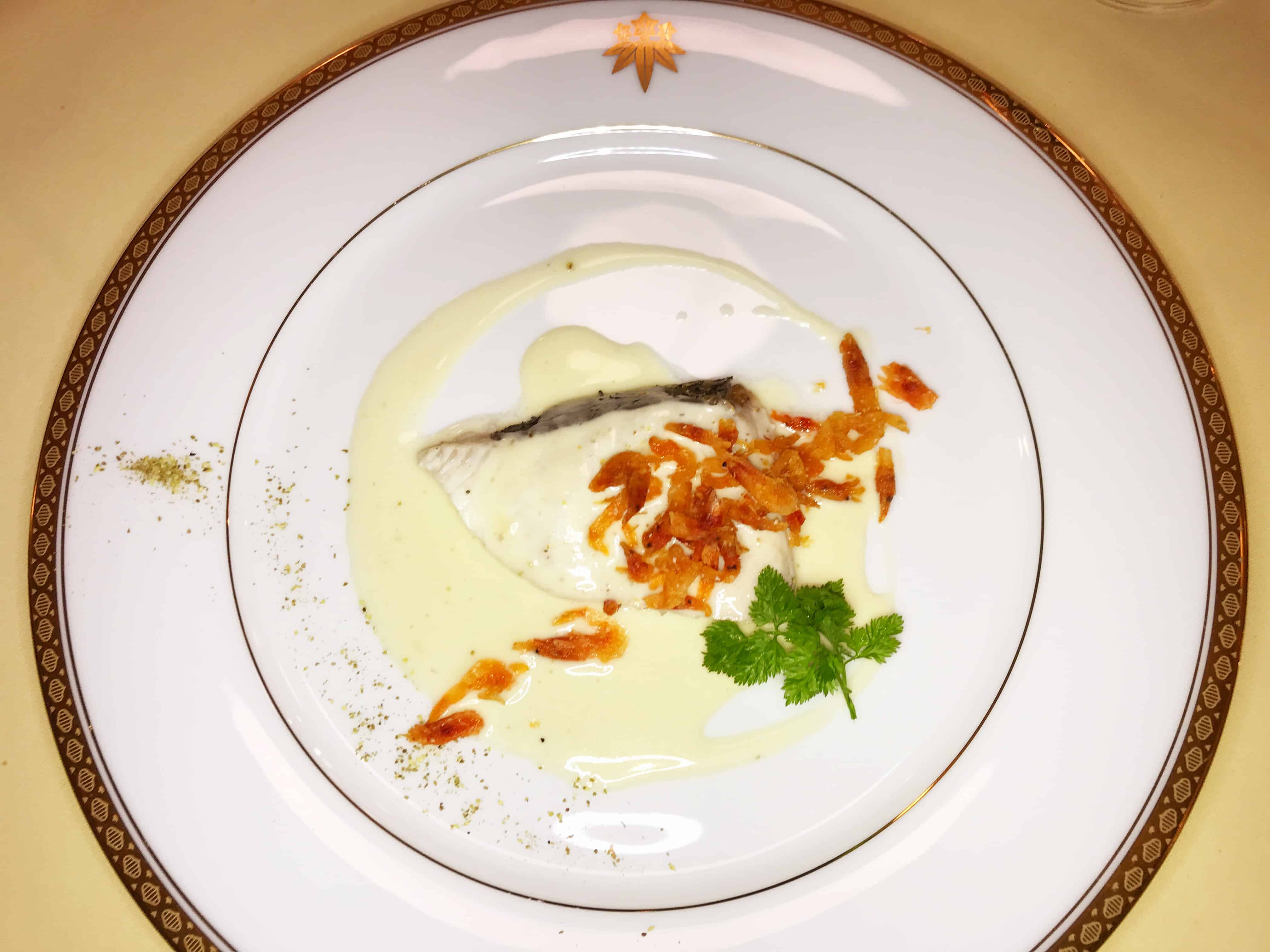
The Sea Bream appetizer was available prepared two different ways.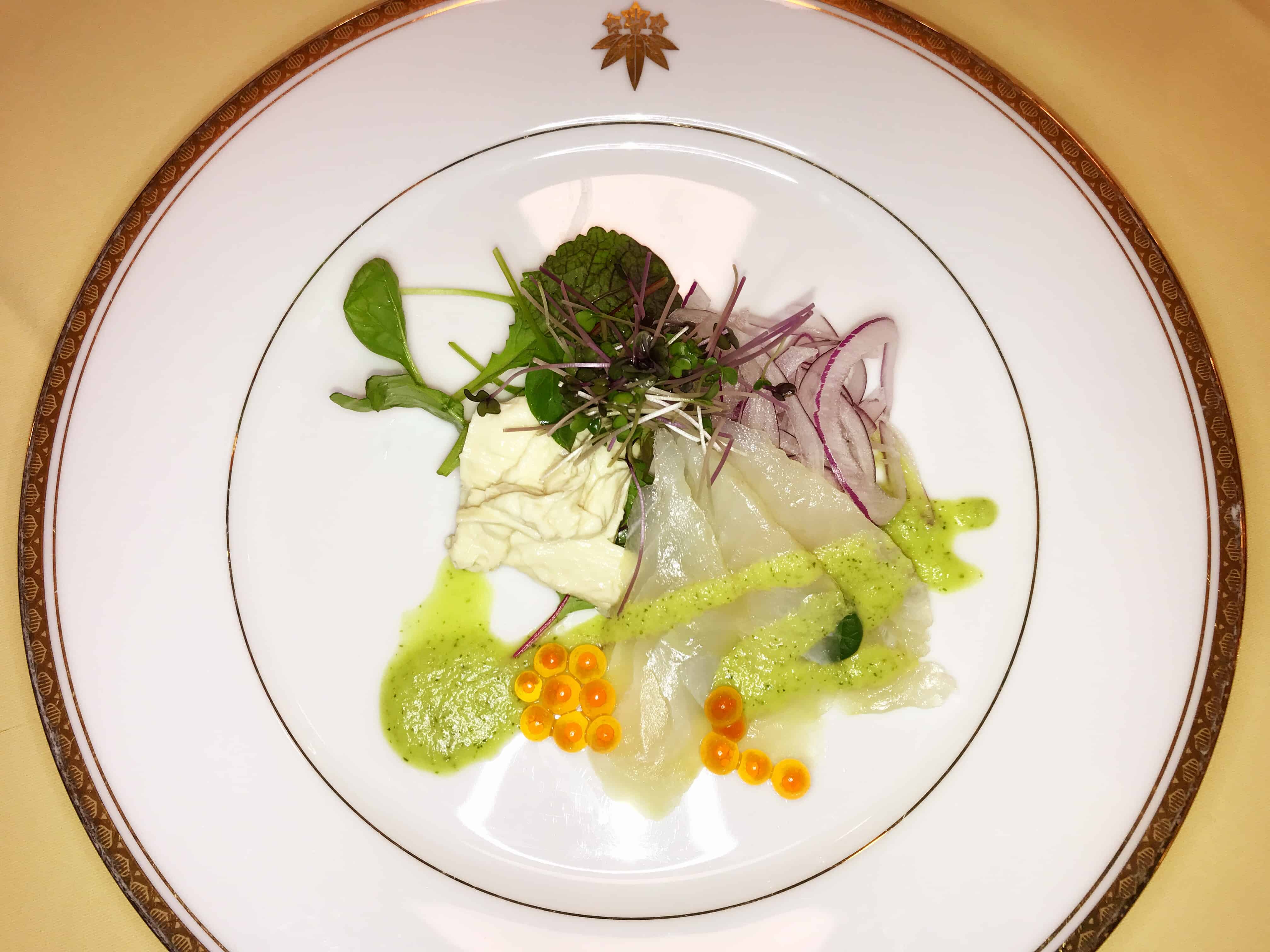
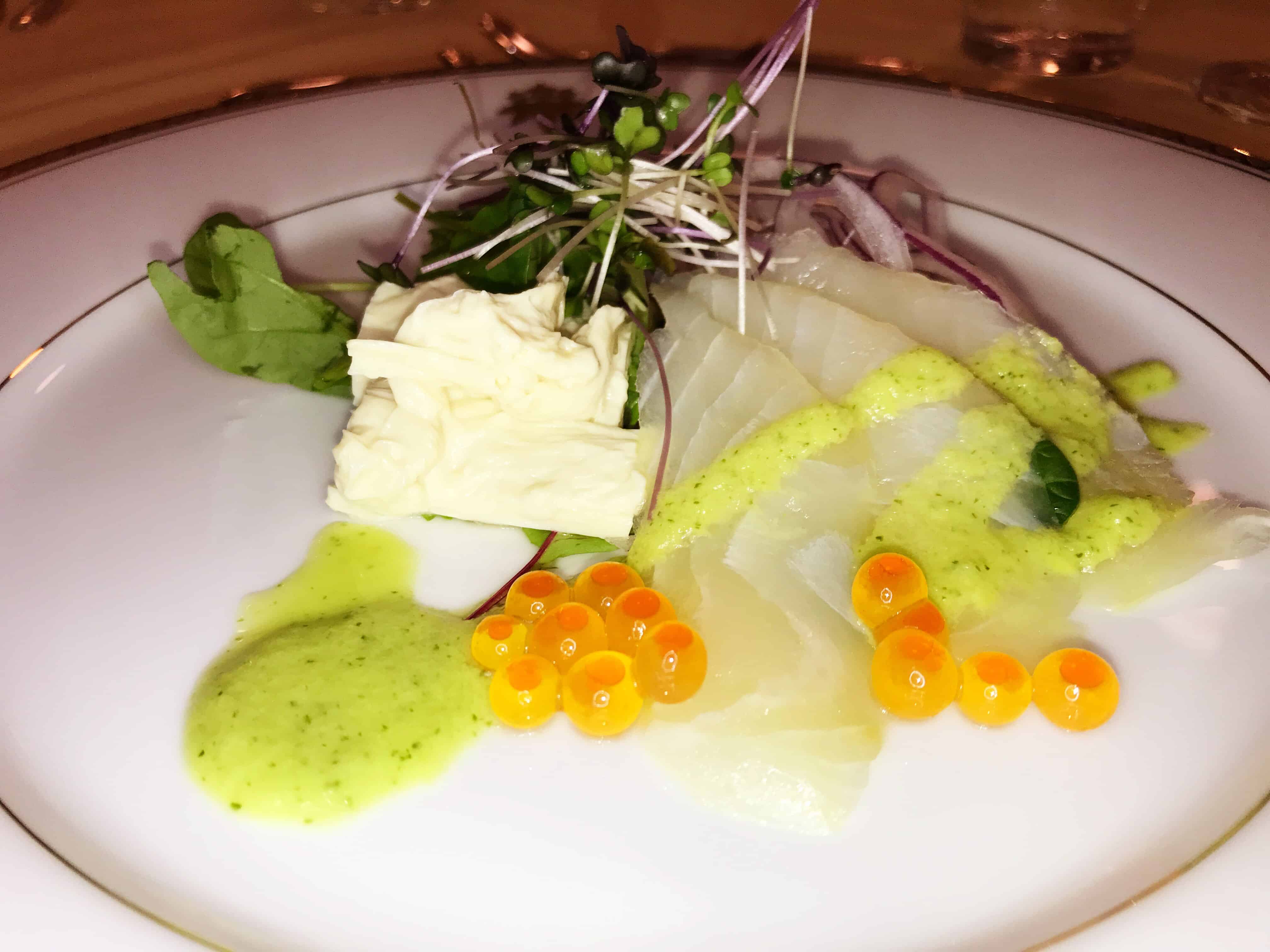
We had two 7 course meal options to choose from, one more focused on seafood and the other beef although with their 7 course meal offering, fish was always an option for one of your courses — the difference was your main entree selection. A healthy shrimp appetizer came on the seafood main course menu. Note that in this region, Yuba is used frequently in their dishes, which is like a Tofu custard of sorts — it tends to be expensive because it takes a long time to prepare it. Not everyone loves the taste, but I am a fan.

French Onion Soup Served in a Heart Dish

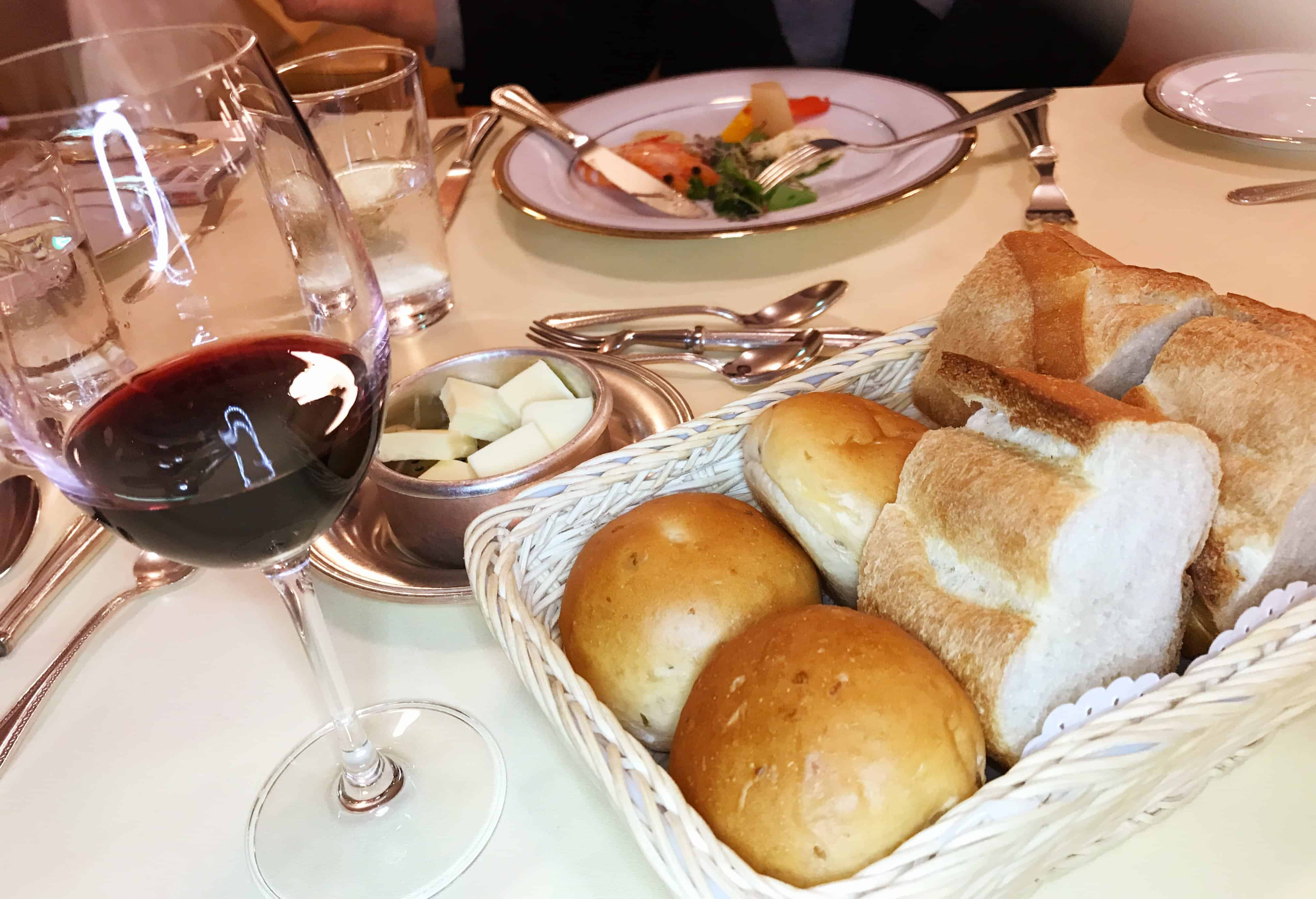
Sea Bream main course options, prepared three different ways
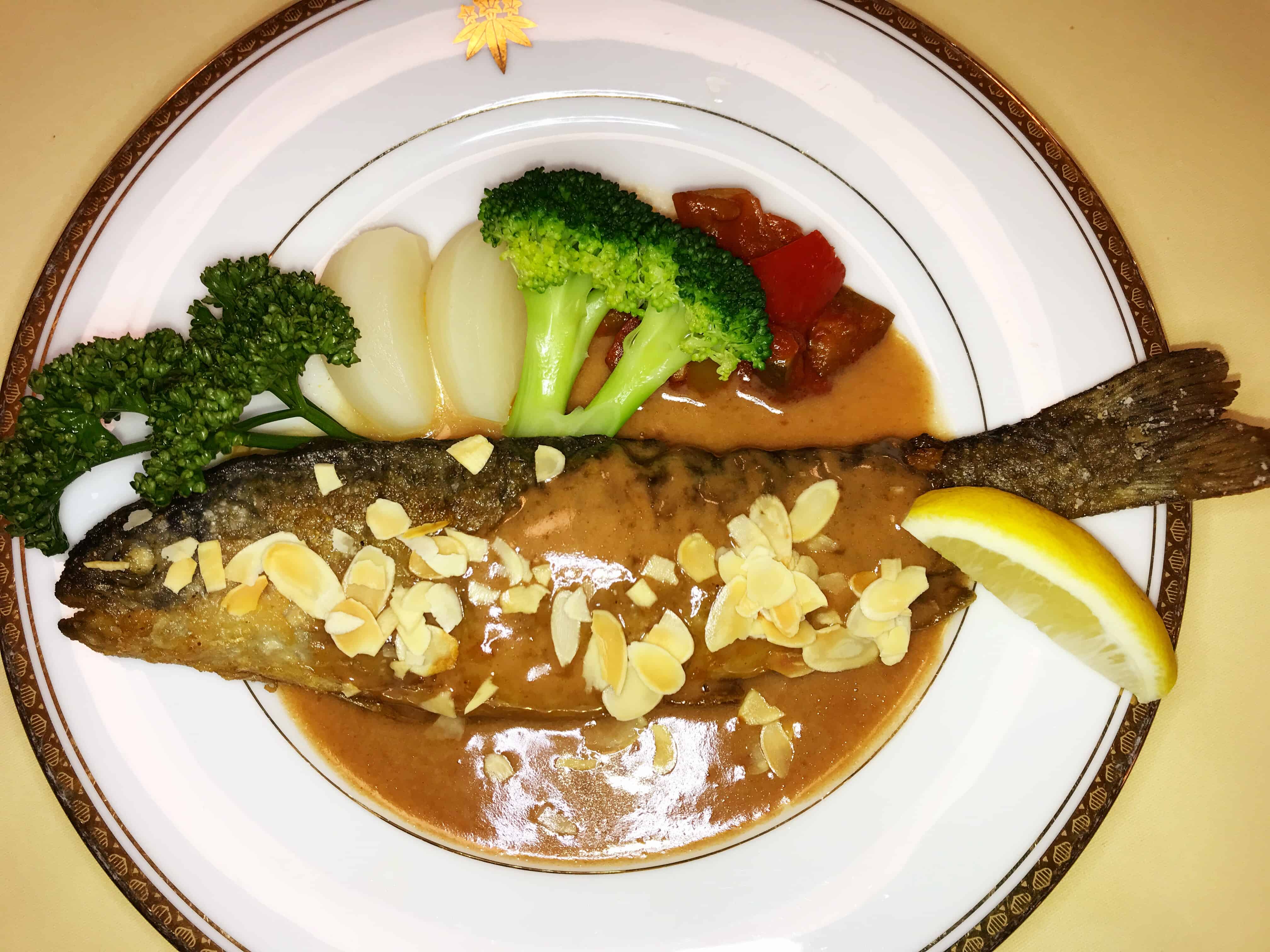

Below, the beef main course with ever so delicious Matsutake mushrooms, which seem to be very common on menus this time of year in Japan. We noticed it in Yamanashi as well. We paired this scrumptious entree with a Chateau des Laurets Bordeaux from France — I was shocked to see a Bordeaux on the menu by the glass.

Dessert changes often but when we were there, the chef prepared custard with fresh fruit. It was heavenly especially with a lovely sweet wine pairing.
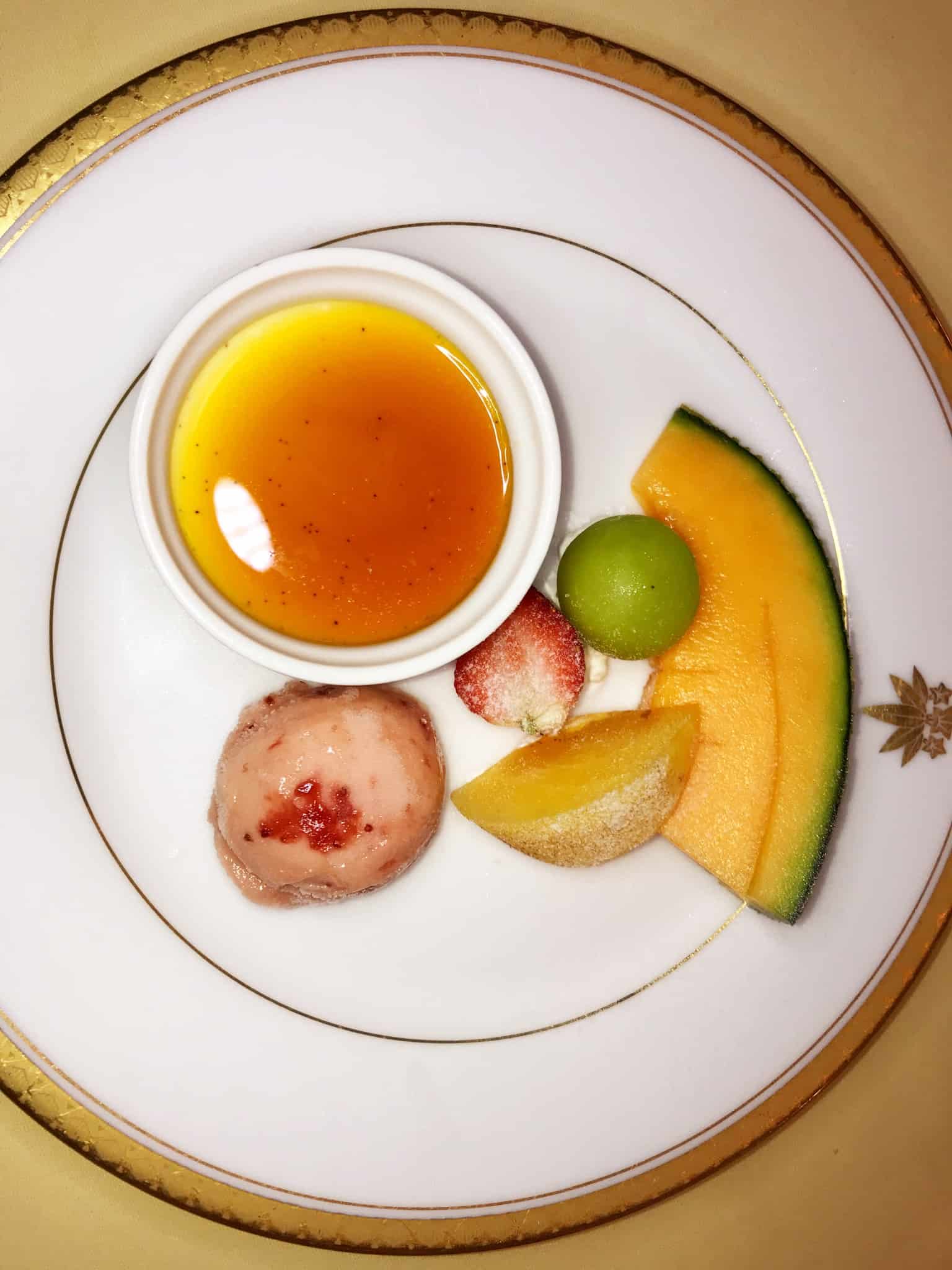
Tea and coffee accompanied the dessert, served in elegant Silver Tea Pots of course.
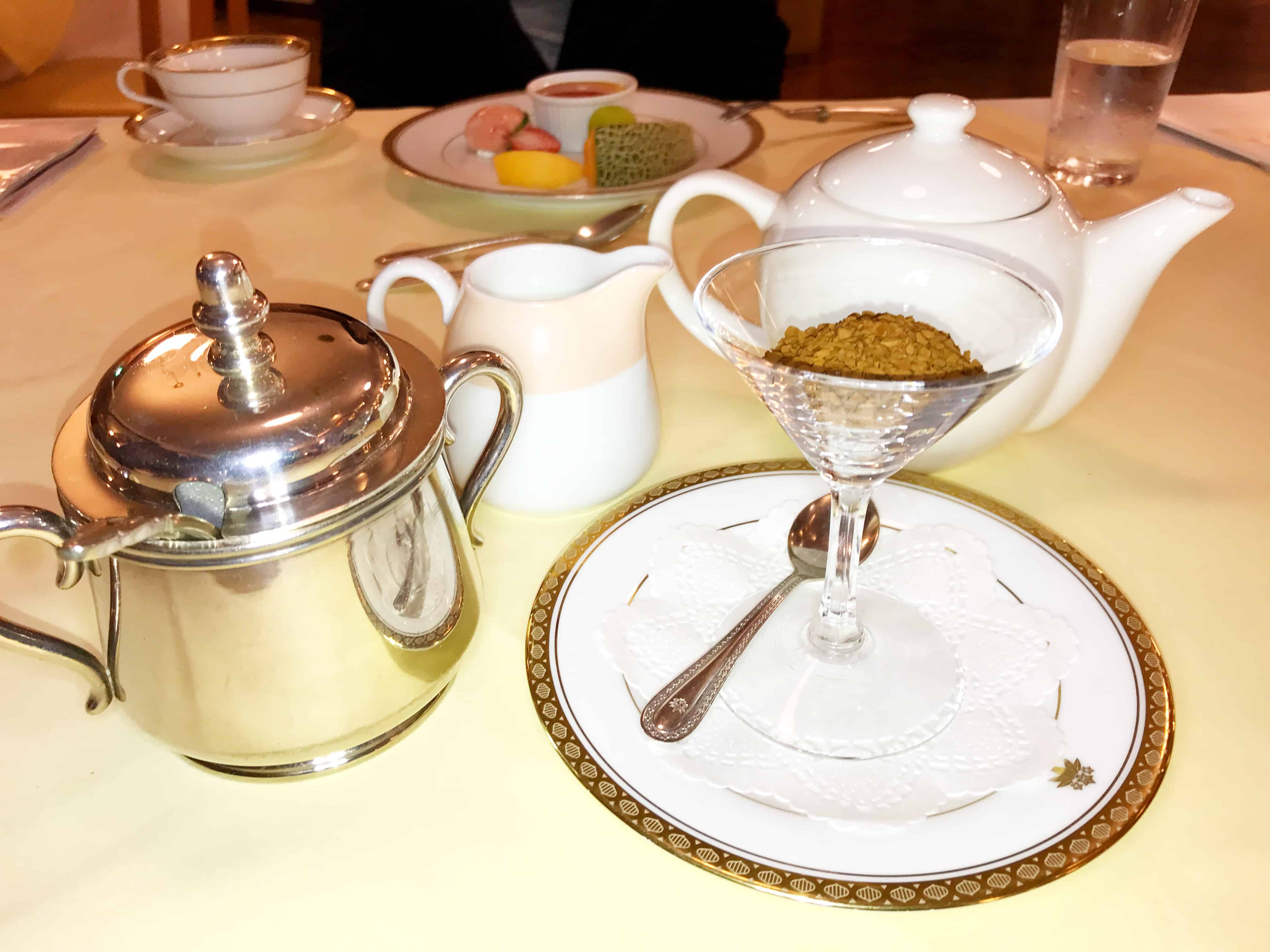
The view of the parking lot area from the front section of the dining room.
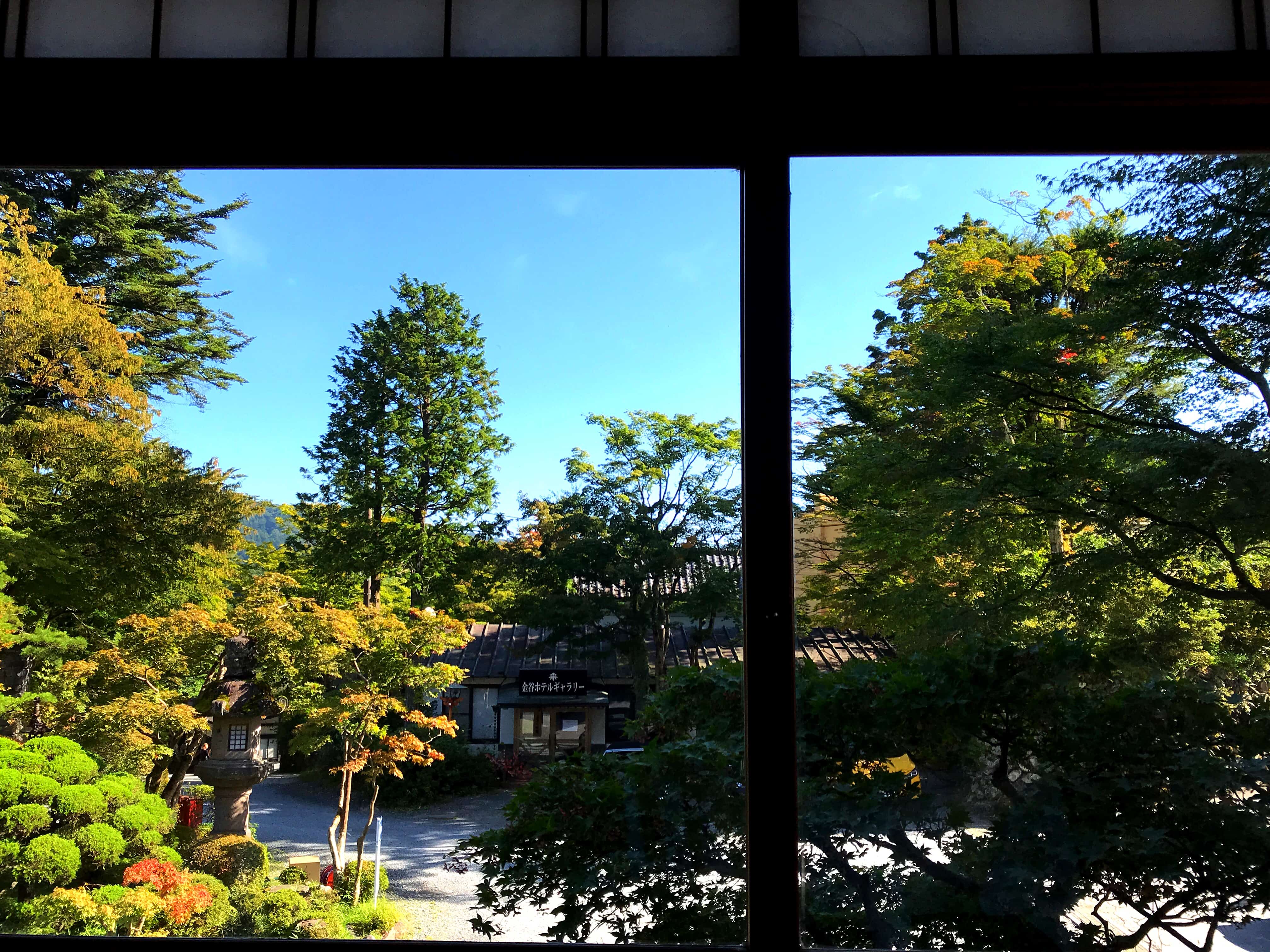
Dining Room Ambiance

And, let’s not forget the decadent wooden carved structures they had in abundance over large mirrors and on the walls.
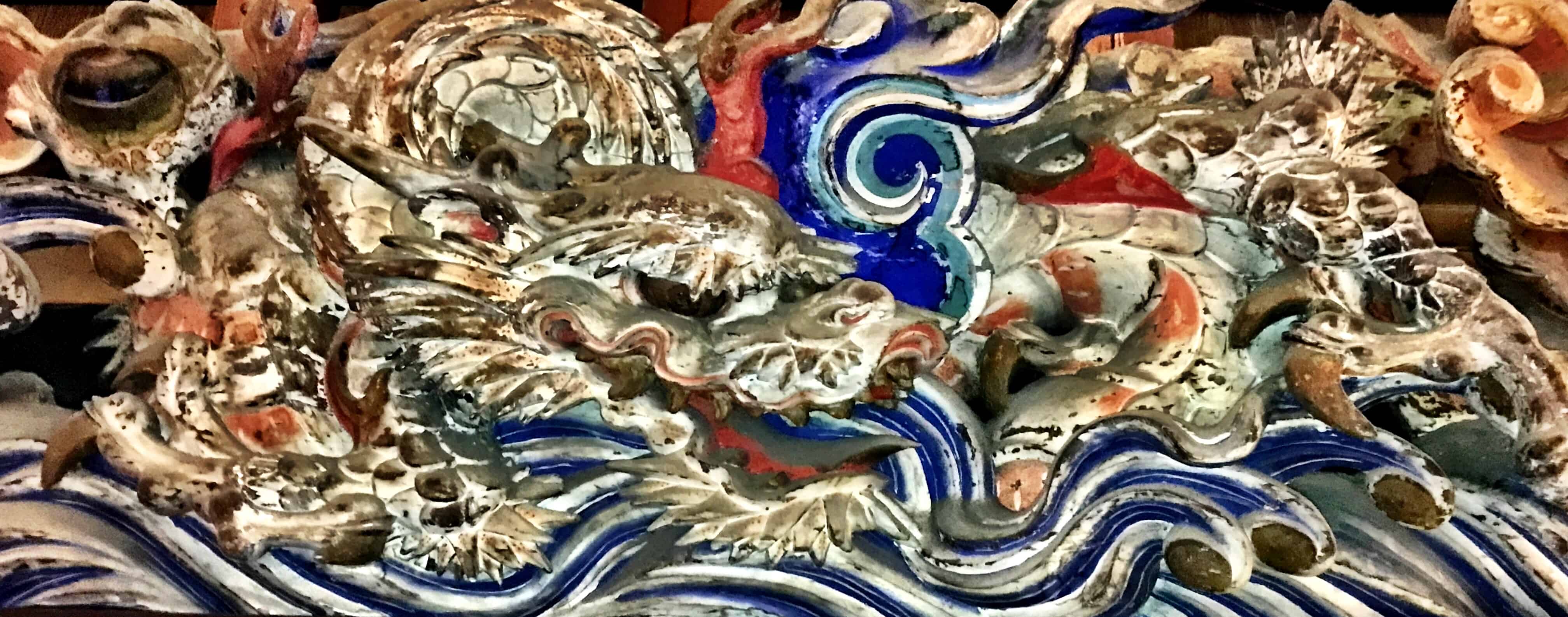
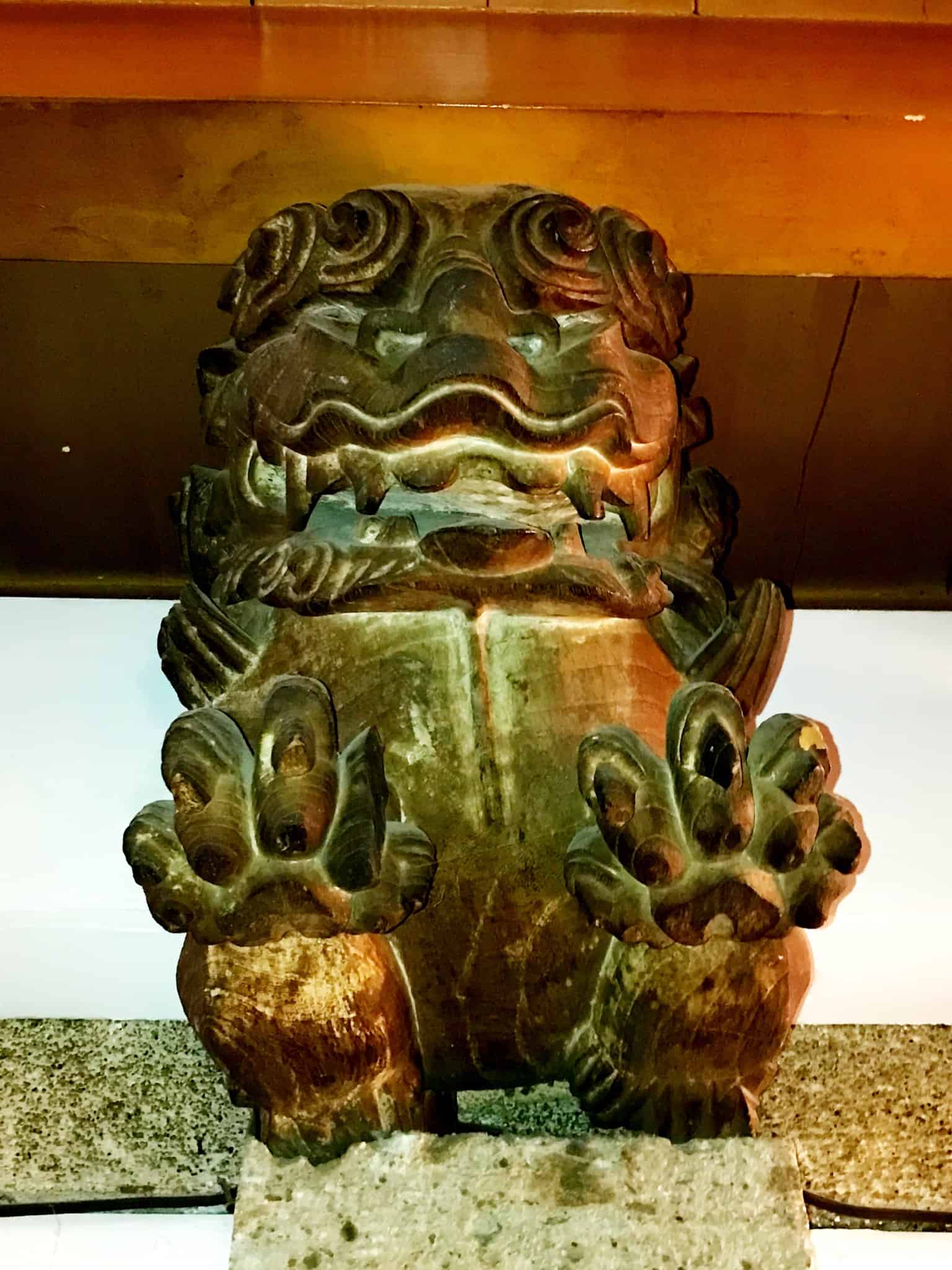
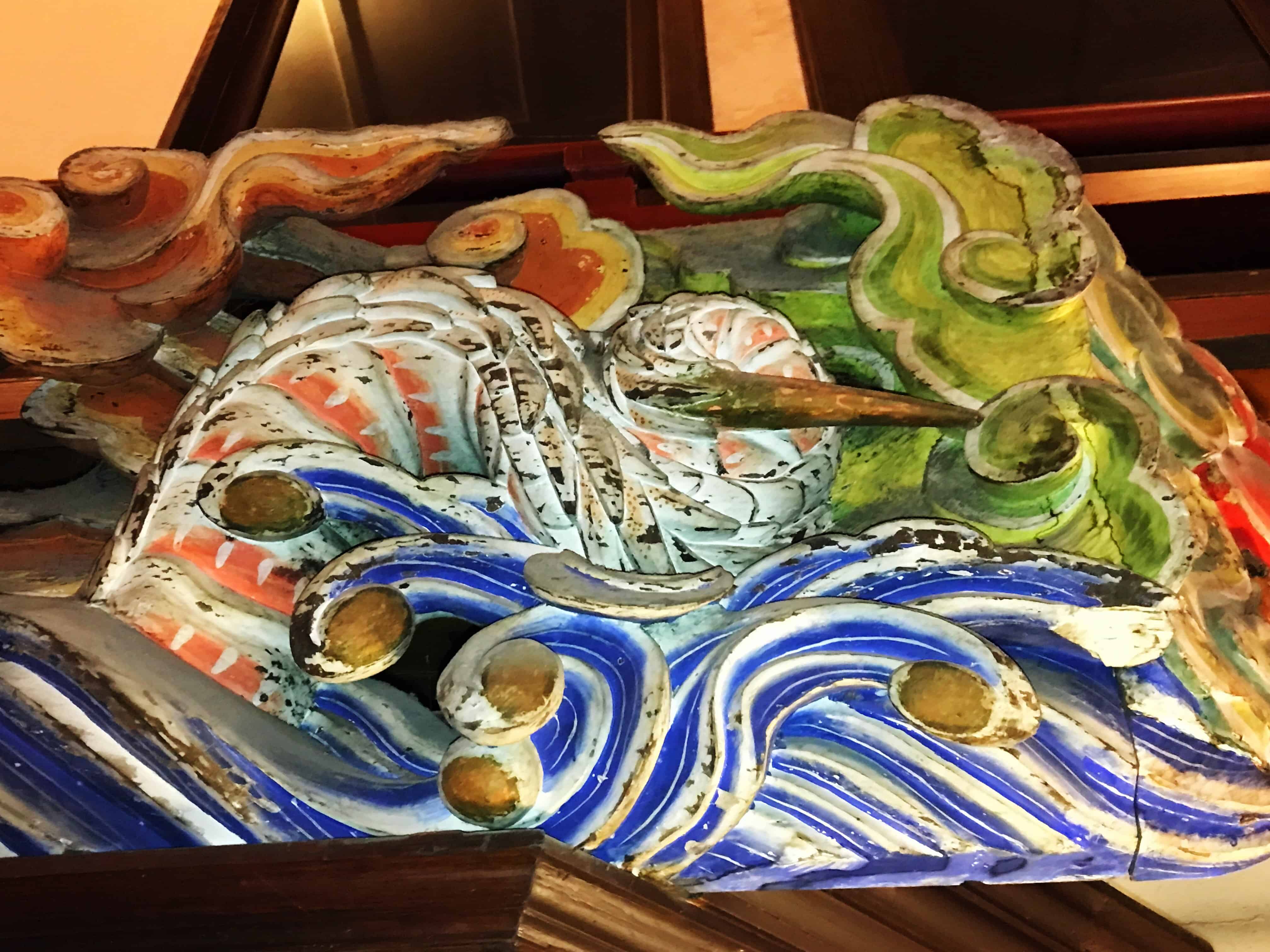
Then, there’s their main bar — for a moment, I thought I had walked into a luxury hotel in the English countryside. This ever so stylish bar has over 200 types of single malt whiskey (yes, really) and jazz is often playing in the evenings. In the winter time, it’s a great place to sit around their Otani stone fireplace and order something toasty to drink.
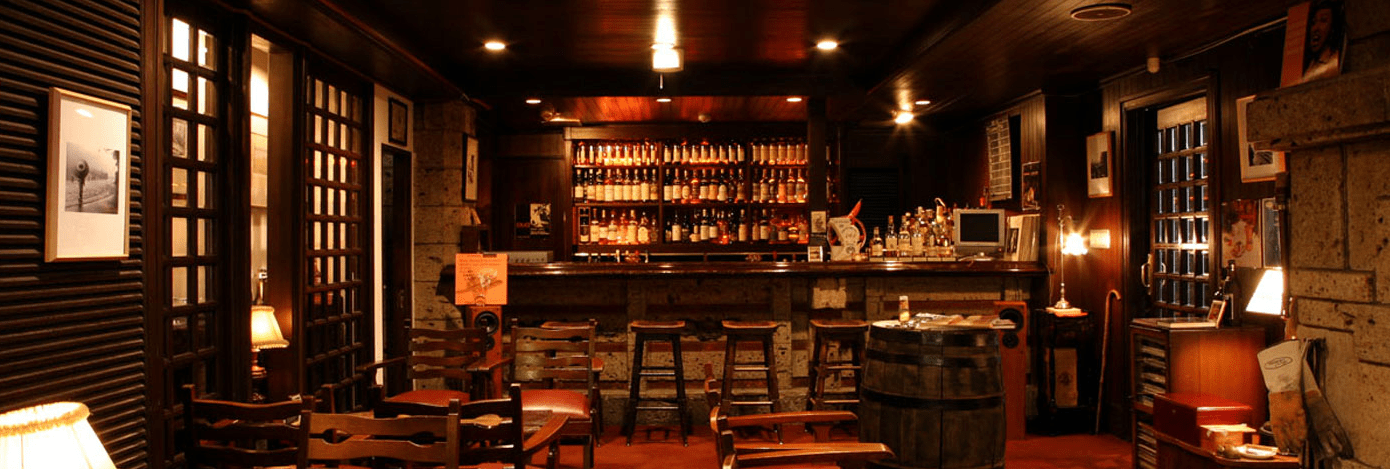
The old world bar at the Nikko Kenaya Hotel. Credit: Nikko Kenaya Hotel.
For more information on the hotel’s history, their rooms, dining experience and how to book, check out their website.
DETAILS:
Nikko Kanaya Hotel
321-1401 Tochigi, Nikko
Kamihatsuishi-machi 1300
Japan
https://www.kanayahotel.co.jp/nkh/
Tele: +81.228.54.0001
____________________________
Note: we were hosted but all opinions expressed are entirely our own.

Renee Blodgett is the founder of We Blog the World. The site combines the magic of an online culture and travel magazine with a global blog network and has contributors from every continent in the world. Having lived in 10 countries and explored over 90, she is an avid traveler, and a lover, observer and participant in cultural diversity. She is also the founder of the Magdalene Collection, a jewelry line dedicated to women’s unsung voices and stories, and the award-winning author of the bestselling book Magdalene’s Journey
She is founder of Blue Soul Media and co-founder of Blue Soul Earth as well as the producer and host of the award-winning Blue Soul CHATS podcast, that bridges science, technology and spirituality. Renee also founded Magic Sauce Media, a new media services consultancy focused on viral marketing, social media, branding, events and PR. For over 20 years, she has helped companies from 12 countries get traction in the market. Known for her global and organic approach to product and corporate launches, Renee practices what she pitches and as an active user of social media, she helps clients navigate digital waters from around the world. Renee has been blogging for over 16 years and regularly writes on her personal blog Down the Avenue, Huffington Post, BlogHer, We Blog the World and other sites. She was ranked #12 Social Media Influencer by Forbes Magazine and is listed as a new media influencer and game changer on various sites and books on the new media revolution. In 2013, she was listed as the 6th most influential woman in social media by Forbes Magazine on a Top 20 List.
Her passion for art, storytelling and photography led to the launch of Magic Sauce Photography, which is a visual extension of her writing, the result of which has led to producing six photo books: Galapagos Islands, London, South Africa, Rome, Urbanization and Ecuador.
Renee is also the co-founder of Traveling Geeks, an initiative that brings entrepreneurs, thought leaders, bloggers, creators, curators and influencers to other countries to share and learn from peers, governments, corporations, and the general public in order to educate, share, evaluate, and promote innovative technologies.








